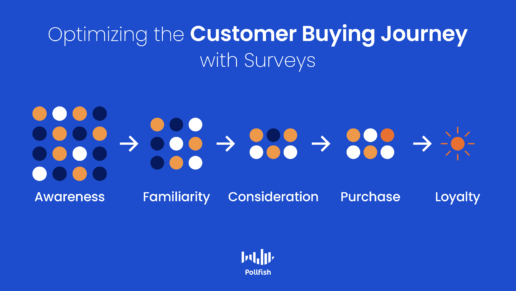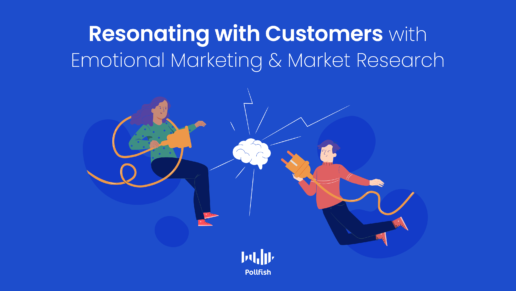Creating the Ultimate Brand Advocate through Survey Research
Creating the Ultimate Brand Advocate through Survey Research
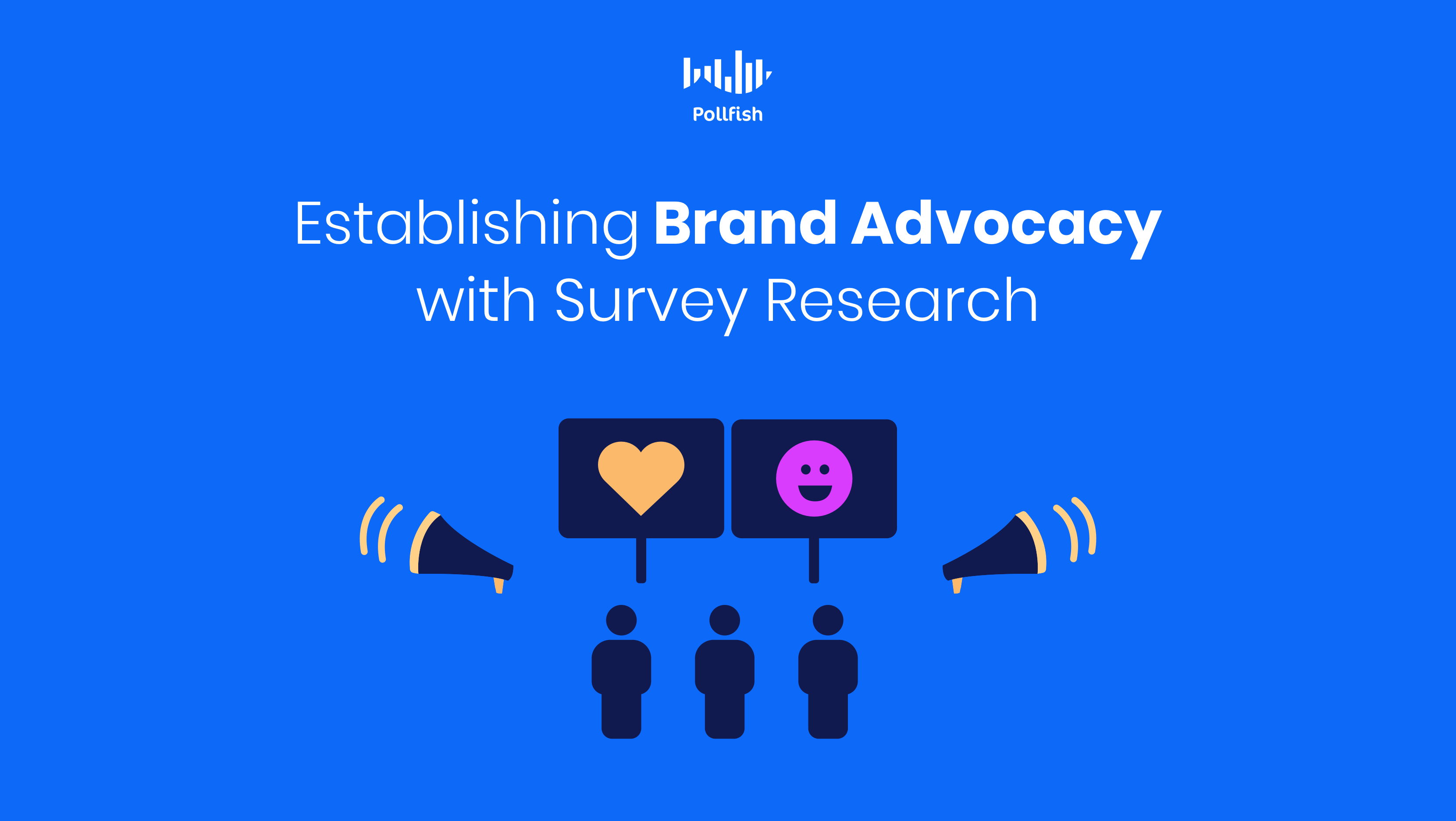
All businesses should strive to create the ultimate brand advocate, or at least attempt to form some degree of brand advocacy.
This is because brand advocates play a major role in strengthening a business; they raise brand awareness, help brands acquire new customers, reinforce brand trust with existing customers and even vitalize brand equity.
Brand advocates influence 50% of purchasing decisions. In addition, a heaping 92% of online customers trust recommendations from their social circle; clearly, brand advocates are integral players when it comes to helping businesses achieve success, as they make word-of-mouth marketing possible.
This article explains what a brand advocate is, along with describing the importance of brand advocacy, what makes a strong advocate and how surveys help brands obtain a loyal brand advocate.
Understanding Brand Advocacy
A brand advocate is a person who shares positive feedback about their experience and patronage with a company across their network and through various means and media.
Unlike a partnership or an endorsement, brand advocacy doesn’t rely on influencers, though they too can become brand advocates. A brand advocate works without any incentive other than their appreciation for a brand. This means, they do all of their advocacy for free.
Although typically associated with word-of-mouth marketing, a brand advocate can support a company via social media channels, online reviews, forums, chat rooms, emails, and other electronic and non-electronic means.
A brand advocate can also express their satisfaction with a company through their own content, whether it is a blog post, images or videos of their using a product or interacting with a company.
This kind of advocate acts as a representative of a brand community, showing others how a brand and its offerings are valuable. Their support for a company is entirely voluntary, thus, they want to take part in advocacy but don’t have to, as they aren’t getting paid for it.
Brand advocates are usually enthusiastic, and outspoken ambassadors, that rank as promoters in an NPS survey. When businesses identify and leverage ambassadors to drive new business opportunities, they are using brand advocacy.
Examples of Brand Advocacy
Brand advocacy can include various actions. It works best when advocates do it authentically because, although brand advocacy can include influencers, this kind of marketing is unpaid and completely organic.
A few examples of the work that brand advocates can provide include:
- Personal (word-of-mouth) recommendations to friends, family and colleagues
- Social media posts
- User-generated content (UGC)
- Customer referrals
- Reviews
- Participating in (or building) customer communities
- Mentions in forums
- Link-dropping
What Makes a Good Brand Advocate
In addition to recommending a brand privately, a good brand advocate is anyone who doesn’t shy away from publicly supporting and praising a brand and its products and services.
A valuable brand advocate is one who proactively promotes your business through various outlets and media. Such an advocate is typically a customer but they can virtually be anyone, such as employees, executives, partners and influencers who are genuinely satisfied with your brand and are happy to publicly show their support for it.
The more ideal brand advocates are loyal, have a high customer lifetime value (CLV), have an online reach and closely represent your company’s values and personality.
As aforementioned, a brand advocate works best when they act authentically; no one likes being marketed to under the guise of genuineness. That’s why most advertisements and the like are marked as such. Ex: “paid partnership with…”
When your advocates’ values align with your brand, their advocacy appears to be far more authentic than it would otherwise. This also means that these advocates are in a better position for reaching your target market, as they typically have a network full of people with like-minded interests and views.
For example, if you are an activewear company, a strong brand advocate will have a fitness background, such as that of a worker in the space or someone who takes their fitness routine seriously.
It is especially important for your brand advocates to be real users of your product, service or experiences, as this kind of authenticity carries the core strength beyond brand advocacy: that of brand trust.
This concept makes a brand advocate much more useful and impactful than an influencer, as paid influencers promote products they wouldn’t normally use, making it easy to label their efforts as product placement.
When your brand advocate isn’t affiliated with your company, their support is seen as more genuine and influential to potential customers.
Finally, engaged employees can also be ideal brand advocates, as they are loyal to a company and share their workplace experiences and culture as employee brand advocates. They share these experiences on their social media and other outlets.
The Importance of Brand Advocacy
Brand advocacy is not merely an added benefit for marketing departments and their corresponding businesses at large. It carries major importance for businesses on several fronts.
First off, a successful brand relies on positive public perception, as this is the core of a business’s reputation. Brand advocacy contributes to this with positive messaging and other content that reinforces a brand’s strengths to the masses.
Secondly, customers who share their positive reviews and experiences about a brand on social media and other digital spaces can reel in new customers. As such, a brand advocate helps increase customer acquisition, which is often more expensive than customer retention.
In this way, a brand advocate positively influences your sales. In fact, as the intro mentioned, brand advocates influence a hefty 50% of all purchase decisions — that’s a significant amount of revenue brought in via free marketing efforts.

Brand advocacy is a must, as it renders a company to stand out in a crowd of competitors. This makes a brand seem more trustworthy than its competitors with few or no advocates. Brand advocacy operates as a powerful publicity machine beneficial for all types of organizations, from B2C retailers to B2B companies and even charities.
Brand advocacy also encourages consumer loyalty. This is crucial, given that customer retention costs companies less than acquisition and yields more profits than acquisition. Retention drives 52% of revenue, whereas acquisition drives about 45%.
Brand advocacy and customer loyalty have a symbiotic relationship, in that brand advocates influence existing consumers to remain loyal, while loyal customers can be so committed to a company that they too become brand advocates.
Brand advocacy also builds trust. When consumers trust a company, whether it is in its service, product promises or delivery of values, it will patronize it instead of its competitors. It will also remain in their minds as opposed to other companies in the same niche.
Why? Consider this: a brand with brand trust is valuable, desirable and therefore memorable, whereas a brand without it is seen as just another fish in the sea, another filler or placeholder for the main player. In this case, the evident key player is the brand with brand trust.
Brand advocacy is also important for content marketing strategy, as it boosts content creation. Whenever a brand advocate includes a brand in their social media, video or blog content, they’re providing free marketing. This becomes useful for SEO, when they include links to the brand, which can drive their readers and followers to your website.
You can also ask your brand advocates to contribute to your blog or other content assets, such as a testimonial. Content is king for a reason, as it keeps your website from becoming stagnant. A high content volume also contributes to brand awareness.
Finally, brand advocates can help expand a business’s target market. This is because advocates help convert members of audiences that are not part of a business’s target market. For example, a local gym may notice that most of its clientele are people ages 18-40. However, a brand advocate may encourage and convince a 60-year-old to frequent this gym.
How Surveys Allow Brands To Obtain Brand Advocates
Rome wasn’t built in a day and neither are brand advocates; rather they are cultivated personas that have to be assured of a brand’s excellence in products, services and experiences.
Brand advocacy is also built through connections. When customers experience strong connections, they connect with brands. Whether it is through brand messaging, values or their CX, when customers form a connection with a brand, they trust it, and brand trust is the gateway to brand advocacy.
But to build this trust, businesses need to first have a strong grip on their target market. As such, they need to study their consumers through easy and practical means. That’s where survey research comes into play as the key practice in primary market research.

Surveys are the most potent tools when it comes to studying a customer base, as they provide firsthand insights from the customers themselves. These insights include information on their customer buying behavior, their likes, hobbies, aversions, opinions, desires, needs, behaviors and virtually all else.
Surveys can be deployed to the masses, across a wide geographic area and tinkered so that only the respondent with the desired demographics, localities and even behavioral qualities are qualified to take part in the study.
That way, businesses only observe the most relevant respondents and gain answers to their most pressing inquiries.
Surveys provide brands with a window into the minds of their target market, allowing them to better market to them, serve them, and most importantly, understand them to cater to them properly and make them feel seen and heard.
Best of all, they are quick to complete, both in terms of deployment and completion of the surveys themselves, should you use the correct online survey platform, that is.
Forming Meaningful Connections with Consumers
Brand advocates are key players for businesses, as they not only posit them in a positive light, but sing their praises to their network of family, friends, colleagues and peers, along with third parties. All companies can therefore benefit from brand advocates.
Surveys are the go-to tools for learning about and fully understanding your customers. While there are many online survey providers, they are not all built with the same capabilities and functionalities. Businesses should therefore choose wisely by opting for a potent online survey platform.
This kind of survey provider should offer an agile platform, one that can easily allow brands to take part in an agile research strategy. It should be a mobile-first platform, as mobile use dominates the digital space.
It should also include advanced skip logic to route respondents to relevant follow-up questions, use artificial intelligence and machine learning to skout out low-quality data, have a wide range of filtering data options and engage respondents in their natural digital environments via random device engagement (RDE) sampling.
When brands use such an online survey platform, they are on the right track towards studying all their consumer segments and building the ultimate brand advocate.
How to Create a Customer Journey Survey for All of its Stages
How to Create a Customer Journey Survey for All of its Stages
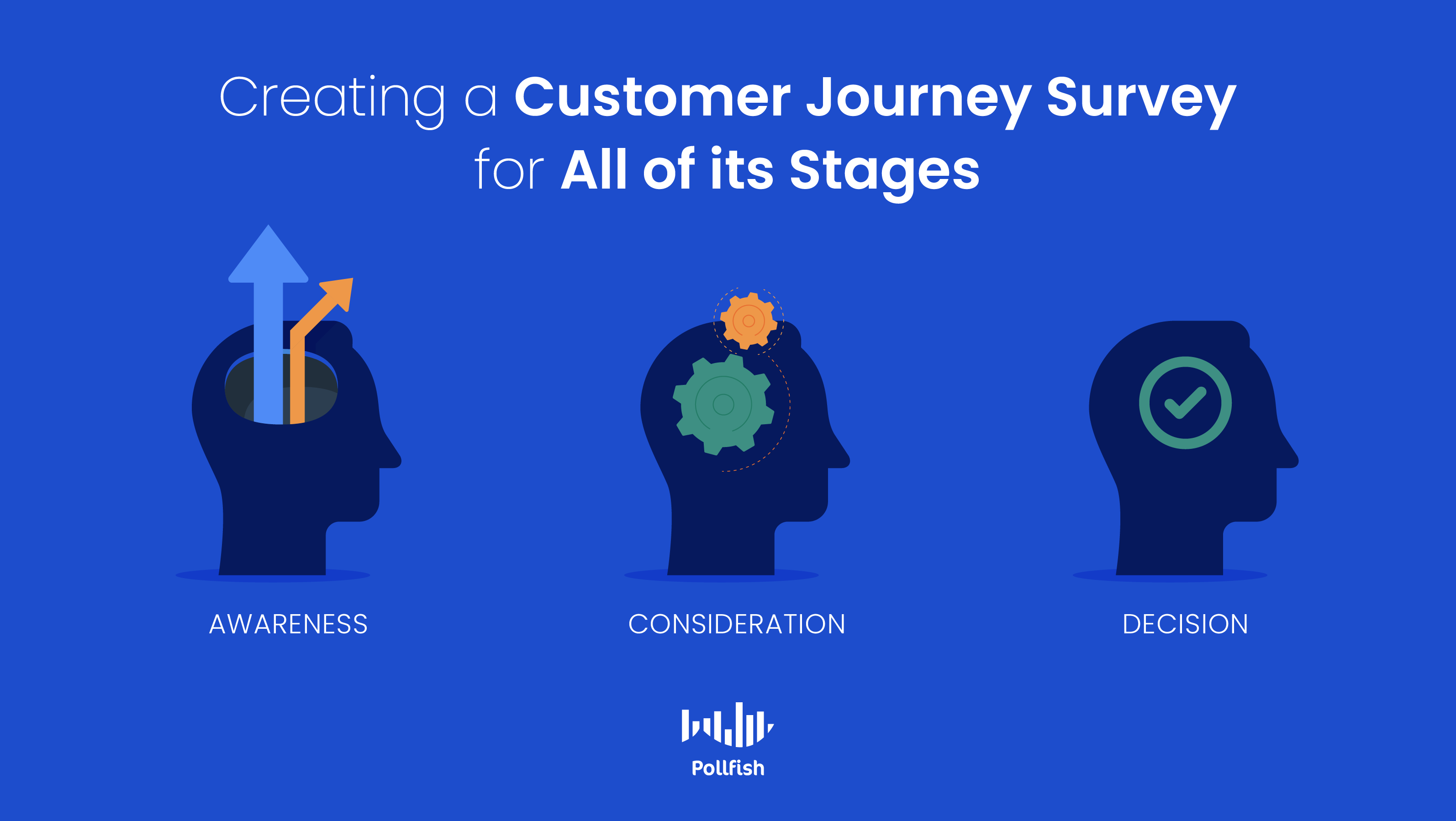
Brands ought to create a customer journey survey to observe how their consumers traverse throughout their buying journey.
After all, 76% of customers expect companies to understand their needs and expectations, and It is the customer-centric companies that reap more profits, typically yielding 60% higher profits than companies that aren’t.
Understanding customers’ needs and expectations largely involves understanding their customer buying journey to properly cater to them, as no customer journey is exactly equivalent.
Some customers may undergo long customer journeys before converting. Other customers may detour and head straight to the checkout, while others may leave mid-journey without making a purchase or converting whatsoever.
This article explains the customer journey survey, why it’s useful and important, how to create one and the questions to use for all of its key stages.
Understanding the Customer Journey Survey
The customer journey survey is a kind of survey that examines consumers in relation to their customer buying journey, as its name suggests. It probes customers on the common things they experience and feel throughout their journey, including specific parts of it.
The customer buying journey is a path of all customers’ digital (and sometimes physical) visitations, behaviors and actions before they make a purchase.
This journey is a kind of process in which customers become aware of, examine and evaluate and make the decision to purchase a new product or service. In the digital space, these journeys do not always conclude with a purchase, as sometimes, they are cut short when a consumer decides to purchase elsewhere or not all.
The customer journey survey can be holistic, covering all parts of a customer journey that businesses either perceive or discover by previously surveying their customers or getting feedback via a voice of customer (VoC) program. This survey can also focus on a key aspect of the buying journey, such as one of its three main stages.
The three main stages of a customer journey are the awareness stage, the consideration stage and the decision stage. Businesses ought to deploy different tactics in their content marketing strategy, along with their ecommerce strategy so that customers stay engaged in each of these stages and are prompted to the next one, until they finally make a purchase.
The Importance of the Customer Journey Survey
This kind of survey is important in several ways. Firstly, it helps form the journey itself at a high level, serving as a tactic for customer journey mapping. This practice entails establishing a visual depiction of customer processes, needs & perceptions during their interactions and relationship with a business.
Customer journey mapping is as significant for small and medium-sized businesses as it is for larger enterprises.
Essentially, the customer journey survey allows businesses to map out the customer journey itself. Rather than forming one through assumptions or online templates, this kind of survey shows businesses exactly what customers are doing, thinking and feeling in their journey.
As such, the insights from this survey enable businesses to form their own customer journey maps which they can use for future marketing campaigns or for their strategic planning process.
By understanding the journey of your customers when they engage with your company, this survey type allows businesses to understand the steps customers take – which includes the steps that are easily accessible for brands and the ones that aren’t.
These steps are important for a number of reasons; they include triggers that incite customers to take some kind of action, whether that is clicking through an ad to its landing page, going further into their journey or finally making a purchase.
For example, these steps can include online review, in which 95% of customers read online reviews before visiting a business. 54% of shoppers comparison shop when they browse online, another crucial step in their final purchasing decision.
As such, it is important for businesses to understand the steps of a customer journey, as they shine a light on key customer insights, allowing brands to not simply map out their customer buying journeys, but optimize them.
In addition, being able to map out and improve the customer journey involves taking the proper steps towards making an impact. In this case, the customer journey survey is effective for configuring and optimizing budgets. This is because it shows businesses how customers are reacting to certain messaging, images, offers and other aspects of their customer experience.
In doing so, the customer journey survey is critical to improving your customer experience (CX), as it dictates how customers feel about a business and plays a major role in customers’ purchasing decisions. This survey helps improve CX, as it allows researchers to diagnose existing issues in their journeys, in turn, allowing businesses to tend to those issues, fix them and innovate more on their customer journey, products and CX as a whole.
Creating a Customer Journey Survey
Creating this kind of survey requires taking several key considerations.
First off, if it is your first customer journey survey, you may need to first form a high-level customer journey map that lays out your expected customer journeys. In order to map out this preliminary customer journey, use an analytics source, such as Google Analytics, or a specialized one, such as one that offers session replay.
These tools allow you to access key analytics on your digital traffic, allowing you to see how a customer made their way to a webpage — whether they clicked on an ad or arrived organically — the duration of their visit, how they traversed a site, how they engaged and more.
These insights will help you design your customer journey map and allow you to categorize your journey into the three aforementioned stages of awareness, consideration and decision. It won’t give you much insight into the kinds of customer personas and segments that are taking these journeys. That’s where the customer journey survey becomes incredibly useful.
Not only does this survey let you examine customers' stages and mindsets throughout their journeys, but to identify the kinds of journeys typical among your customer segments and personas.
After you parse through your analytics and other digital traffic tools, refer to your customer segments and their habits. If you do not have access to this, you should conduct market segmentation, another practice made possible thanks to consumer surveys.
Once you have studied your customer segments, consider the segments and personas whose journeys you intend to survey. It is possible that you may need to survey them all to get a clear picture of your customer journeys across personas.
Either way, begin your customer journey survey by organizing each sub-campaign by each persona type. You can also group sub-campaign based on journeys in a certain marketing campaign, such as a particular offer or landing page. The most important thing is to pin down the purpose of your survey campaign so that you have a central point of study.
Next, consider which stages you need to survey; having observed your analytics helps you determine this. If you need to study all stages, consider creating surveys in chronological order. Come up with some key inquiries you need to be answered.
Then, choose from the question examples to use in each step of the journey from the examples in the following sections.
Survey Questions for Awareness
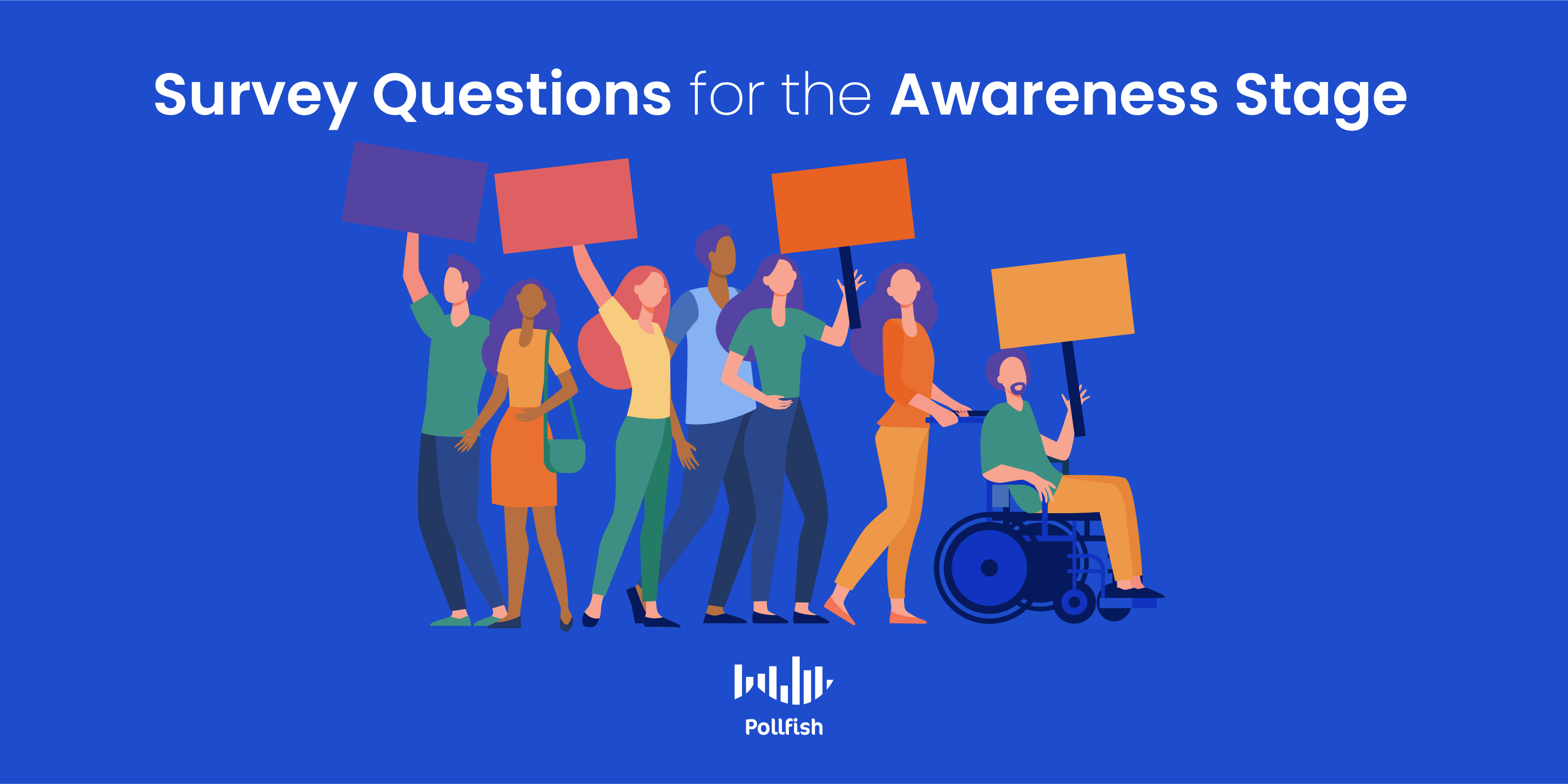
- What is the biggest problem you have with [something pertaining to your niche/products]?
- Answer type: Multiple-choice, multiple-selection, with an open-ended field option
- What bothers you the most about [completing an action, buying a product in your niche, etc.]
- Answer type: Multiple-choice, with an open-ended field option
- How do you usually go about fixing this problem?
- Answer type: Multiple-choice, with an open-ended field option
- What have you considered to fix/ tackle this problem?
- Answer type: Multiple-choice, with an open-ended field option
- Have you considered using [your brand] for this problem?
- Answer type: Yes or no, followed by a follow-up question on whether they’ve tried competitors’ products/services and another question on what they like/ dislike about them.
- Apply skip advanced logic to route your respondents to follow-up questions.
Survey Questions for Consideration
- What are your biggest concerns about [the problem]?
- Answer type: Multiple-choice, multiple-selection, with an open-ended field option
- What is the easiest way for you to solve this issue?
- Answer type: Multiple-choice, with an open-ended field option
- What would make you choose to try [your brand] if you haven’t already?
- Answer type: Multiple-choice, multiple-selection, with an open-ended field option
- What do you think of this selection? [Mid-funnel journey question for users of product pages, site menus, etc]
- Answer type: Multiple-choice, multiple-selection
- How would you rate our services based on the following? [Use image of an ad with a list of strengths relating to buying from your brand]
- Answer type: Rating scale, stars, etc.
Survey Questions for the Decision Stage
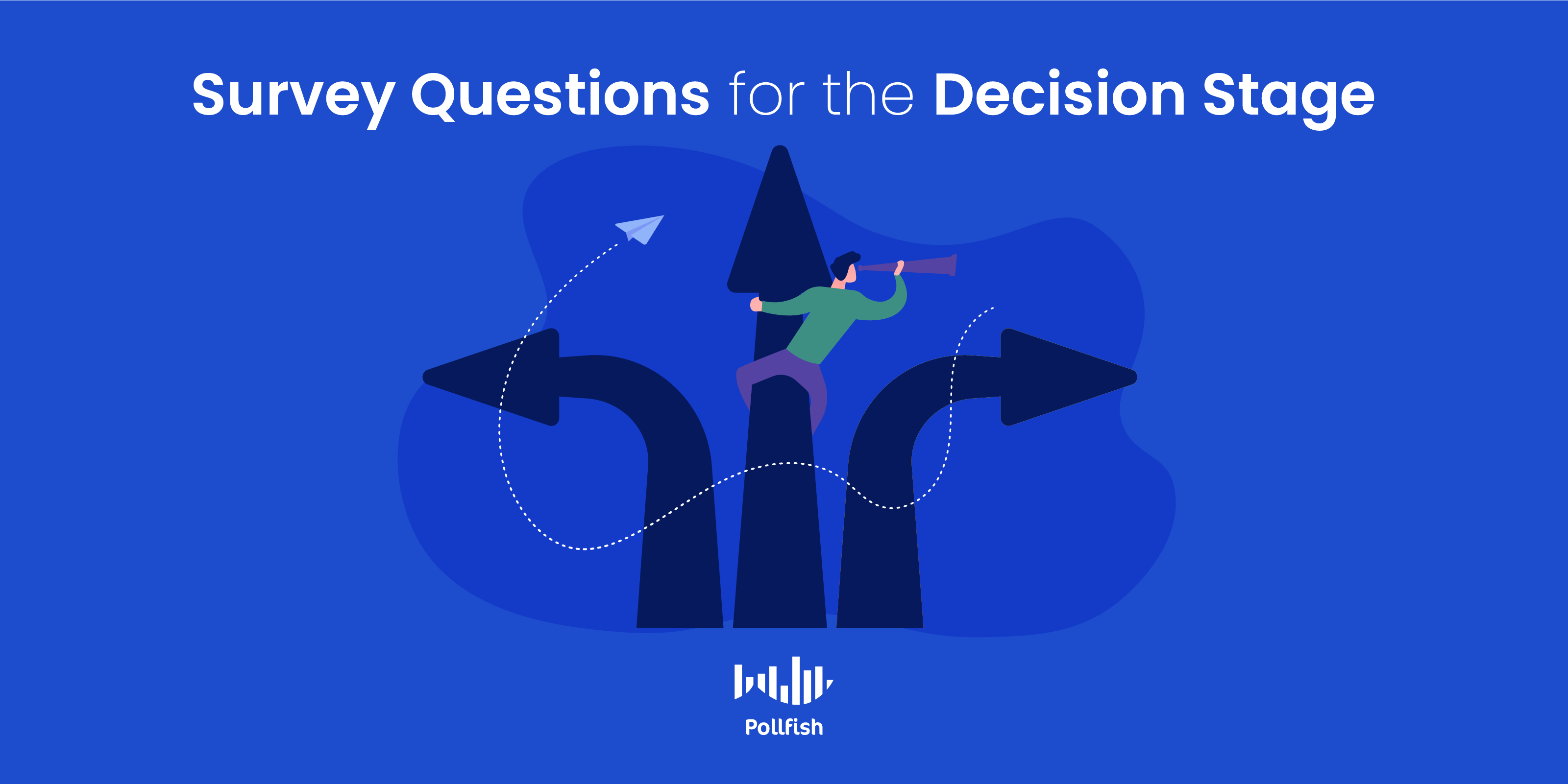
- When thinking about other companies that provide product X, which brands come to mind?
- Answer type: Multiple-choice, with an open-ended field option
- If all of the brands that can fix the problem had different prices, which would you purchase from?
- Answer type: Multiple-choice, Matrix question with options that mention price, capabilities and quality
- Which company are you most likely to buy from to fix your problem?
- Answer type: Multiple-choice, multiple-selection,
- Have you considered switching brands for this problem?
- Answer type: Yes or no, followed by a follow-up question on what would make them switch brands or try yours.
- Does this ad make you want to buy from us? [Use a multimedia file, such as an image or video that features your brand’s strongest capabilities to fix the customers’ problem.]
- Answer type: Yes or no, with an open-ended field option
- Answer type:
Optimizing the Customer Journey Survey
Being attuned to the customer journey is important, as it lets market researchers and businesses understand what their customers go through before finally making a purchase, or cutting their journey short before converting.
The customer journey survey assures that businesses can both map out their customer journey and understand their customers’ decisions throughout it. This kind of approach is strategic to better understanding customer expectations and is therefore crucial for optimizing the customer experience.
Aside from setting up this survey, market researchers need to use a strong online survey platform to carry out this survey campaign.
The most potent online survey platform makes it easy to make your own survey in three easy steps, offers advanced skip logic to route certain respondents to the correct follow-up questions, uses random device engagement (RDE) sampling to engage respondents in their natural digital environments, as opposed to pre-recruiting them, implements artificial intelligence and machine learning to disqualify poor-quality survey data and much more.
Businesses who use an online survey tool with these capabilities and more are well-equipped to create customer journey surveys, deploy them, map out their customer journeys and become well-adapted to their customers.
How to Build Brand Trust With Surveys
How to Build Brand Trust With Surveys

Businesses must reach a sense of brand trust, as it reflects customers’ expectations of a brand being able to fulfill its promises about its products, services and experiences.
As such, all businesses must work towards securing a strong sense of brand trust, as no business is immune to customers who don’t trust it.
Although large companies carry high brand equity and therefore seem to be at an advantage when it comes to brand trust, 76% of consumers trust small businesses more than large.
However, this doesn’t mean that small companies automatically have more brand trust and can reap all of its benefits. All brands have to establish this concept for themselves, as lacking it has dire consequences. 81% of customers say that they will only buy from a brand they trust, which leaves the brands that they don’t trust at a major disadvantage, one that will undoubtedly harm their revenue.
This article explores the notion of brand trust, its importance, benefits, how to achieve it through five common ways and how survey research helps brands attain this consumer confidence.
Understanding Brand Trust
Brand trust gauges how much confidence a target market has in a business. Customers exhibit their trust in a brand as a kind of willingness to rely on the ability of a brand to perform its key functions and the other promises a brand makes, whether they are in the form of advertisements, social media, their website, their marketing content or otherwise.
Brand trust typically arises after customers evaluate companies' offerings. However, there is much more involved in trust-building. Customers, therefore, don't merely assess offers; rather, they weigh a company’s promises against their products, services and experiences.
This involves CX (customer experience), the total of all the feelings that customers undergo throughout their customer buying journey.
The concept of brand trust is rooted in a brand’s reputation, as such, it carries all the important aspects of maintaining a good reputation with customers and the general public. It should thus come as no surprise that brands with poor reputations struggle, while brands with good reputations strive.
It may take longer for brands to establish a healthy level of brand trust when it is new, virtually unknown or untested, or in times of reputational crises. As for the latter, it can emerge during scandals, significant bad reviews, poor social mentions and more.
The Importance of Brand Trust
This business concept is important for various reasons, most prominently because the way consumers, especially a target market, feels about business matters. Trust is important, as it is one of the most positive feelings that customers can have towards a brand.
Brand trust brings value to a target market. While some situations may prompt customers to buy from a brand they don’t trust, these are nothing but one-off instances of need and lack of other options. Trust, on the other hand, fosters consumer loyalty, the bedrock of repeat sales, aka customer retention. It is no wonder that an increase in brand trust correlates with a higher customer retention rate.
As such, when brands build trust, customers reward them with ongoing loyalty, a long-lasting relationship in which customers don’t merely buy from the same brand, but choose it over competitors time and again. In this way, the continuous support brands attain with brand trust yields a higher CLV, or customer lifetime value.
CLV denotes the total monetary value a customer will bring to a business during their relationship with the business across their lifetime. Given that brand trust incites customers to continuously purchase from the same brand, it positively ties in with customers’ CLV. Thus, the longer relationships present in retention spur more monetarily valuable customers.
Aside from valuable customers, brand trust is crucial to a company's livelihood, as it softens the blow of a reputational crisis. This is because customers who are loyal will continue to engage and purchase with a company they trust, as opposed to a company they have little or no trust in. As such, brand trust serves as a kind of security blanket, enabling companies to take more risks.
Brand trust also forges brand advocacy. When a happy customer becomes a recurring customer, they tend to speak out about their positive CX, therefore becoming a customer advocate. Customer advocates help brands obtain brand awareness and augment their brand visibility, reputation and overall branding efforts.
They do this by spreading rave mentions about the brand they trust on social media, forums, review sites, brand websites’ comment and review sections, along with via word of mouth. This is tremendously important for a business, as customer advocates do many of the things that salaried marketing and PR employees do, but for free.
Finally, when a brand reaches high levels of brand trust, it is not only setting itself up for a better reputation and higher sales, but it is growing in its potential to be a key player in the cultural trends of an industry. Sometimes, this potential may carry over to greater cultural relevance, such as being a household name of a product that represents an entire country.
The Benefits of Brand Trust
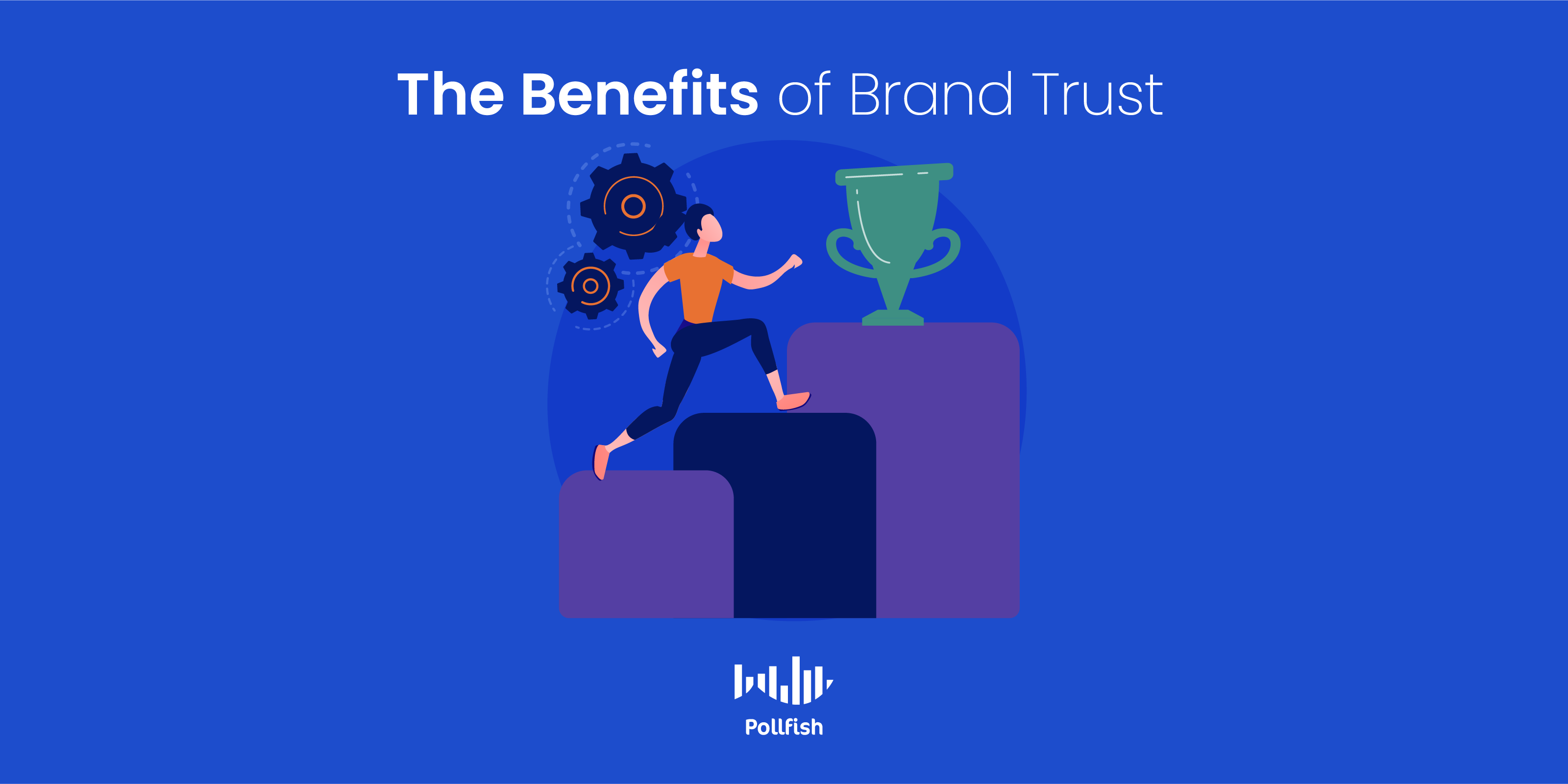
There are several benefits to brand trust, which complement its importance, as laid out above. These benefits also bring new ideas that support the need to establish and maintain brand trust. The following lists the key benefits of securing a strong sense of brand trust within your business:
- Brand trust drives new business, making customer acquisition more feasible.
- It makes consumers more receptive to marketing campaigns.
- It fosters connections with consumers and drives loyalty.
- It allows brands to innovate more, since consumers trust what they.
- It makes those who write or speak negatively about a company lose credibility.
- It helps brands achieve cultural relevance when strong enough.
- Key benefits such as brand loyalty, advocacy and goodwill allow businesses to overcome various challenges and obstacles.
10 Ways to Build Brand Trust
There is far more to building brand trust than simply executing a strong product experience. Consumers have growing concerns about the customer experience (CX) that brands promise, along with other promises brands make in their marketing messages, such as their impact on society.
As such, businesses need to pay attention to other key facets to work towards strengthening, solidifying, and in some cases, establishing brand trust. The following lists include 10 pieces of advice for brands to build trust among their target market and the general public.
- Create quality products and services.
- Establish optimal omnichannel CX, including digital experience, in-person, over the phone, etc.
- Charges reasonable prices.
- Offer promotions, sales and customer rewards programs.
- Include a generous return policy.
- Treat customers well, whether on a chat, on phone support, etc.
- Handle customer service issues quickly.
- Keep up your end of promises.
- Establish clear communication with customers.
- Create consistent content; content is king for many reasons.
How to Forge Brand Trust Through Surveys
Survey research is a proven method of accurately measuring consumer sentiment through customer feedback — when used with the correct online survey platform, that is. Surveys allow businesses to probe as deeply as they wish into virtually any business matter, from product satisfaction to customer effort. When it comes to building trust, surveys allow market researchers and business owners to understand their target market’s needs, desires, expectations and aversions, which essentially tells them all they need to know to build trust.
Researchers can set up surveys with questions that are as granular as they need, allowing them to zero in on a topic, so that they can identify and apply the proper course of action, whether that entails correcting something, creating a new product feature, changing an existing experience and much more.

Additionally, researchers can make their sampling pool as granular as possible in the screening section of a survey. In this section, researchers can filter respondents as precisely as they need, setting eligibility requirements on demographics, psychographics, device used and more.
Researchers can even set restrictions based on how respondents answer additional screening questions, permitting only those who answer in a certain way to take part in the survey. That way, only the qualified respondents will be able to take the survey.
By providing precise information and quality data, surveys enable businesses to extract only the information that they need to build brand trust. Businesses can deploy as many surveys as they deem necessary. By iterating surveys, brands can gather as many perspectives as possible from their target market, paving the way for new ideas to build and improve trust and maintain statistical accuracy in the findings.
Heightening Your Brand for the Long Term
Brand trust is critical for the survival of any business. Whether you seek to increase sales or customer loyalty, remain relevant or simply to stay afloat, you need to build brand trust for your business.
When your brand consistently delivers on quality, reliability and credibility, it will yield significant benefits, as customers will go to your brand first and repeatedly when they look for products and services in your niche.
To build brand trust, you must understand your customers as precisely as possible, cater to their needs and form marketing campaigns and promises to begin with. Survey research has transformed businesses' access to consumers, allowing them to reach a wide swath of their target market and extract their feedback and other necessary customer data.
However, not all online survey platforms are built the same, therefore, they don’t all offer the same capabilities and reap the same benefits. To gain the most quality customer data, businesses must use a strong online survey platform, the kind that offers random device engagement (RDE) sampling to engage respondents in their natural digital environments, uses
You should also use a platform that offers advanced skip logic to route respondents to relevant follow-up questions, one that implements quality data checks via artificial intelligence and machine learning and much more.
When an online survey platform offers these capabilities, businesses gain the most relevant and high-quality consumer data, the kind that allows them to accurately understand their customers’ preferences, expectations and virtually all else. In turn, it allows businesses to feasibly build and improve their brand trust.
Optimizing the Customer Buying Journey with Surveys
Optimizing the Customer Buying Journey with Surveys
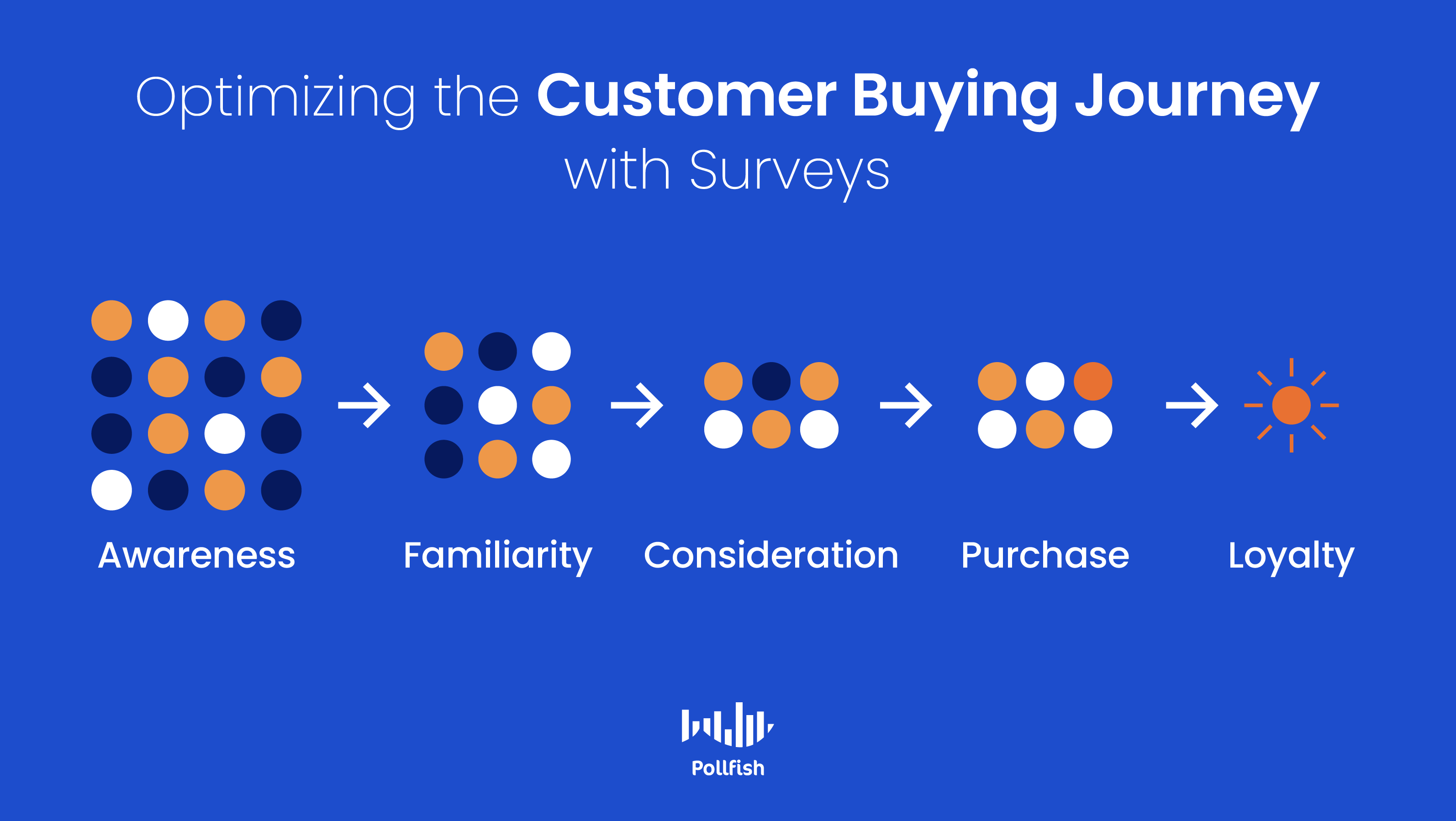
To properly execute their strategy, businesses need to study their customer buying journey, adapt to it and optimize it so that customers experience a quicker path to purchase.
Marketing and market research departments, therefore, need to actively engage in their sales cycle to optimize their customer journeys.
Given that shoppers today have a wealth of information within reach, it affects their customer buying behavior and in turn, their buying journeys. 67% of the customer buying journey takes place digitally. Businesses can take advantage of this digitized shopping, by nurturing and studying their target market online.
Surveying customers as they meander through their buying journey is a solid technique to better understand them, their thought process and their buying journey.
This article delves into the customer buying journey, explaining its importance, its three main stages, how survey research can help optimize this journey and more.
Understanding the Customer Buying Journey
This concept refers to the customer’s path to making a purchase. The customer buying journey is a process in which customers become aware of, examine evaluate and make the decision to purchase a new product or service.
This occurs, as most customers do not suddenly decide to purchase something on a whim; rather they consciously wade through three main stages that make up the typical customer buying journey. These stages are the awareness, consideration and decision stages.
The customer buying journey is essentially an active kind of research process that customers participate in before they make a purchase. During this journey, they encounter both customer and brand experiences, both of which impact the course of their journey, along with the customers’ final decision.
In a nutshell, this process involves everything that a customer would need to do before deciding whether or not to purchase from a business.
The Importance of the Customer Buying Journey
The buying journey holds an abundance of importance for businesses and customers. Businesses can take advantage of it by providing value and answers to customers at each stage. By doing so, they can successfully nurture customers to decide to buy from them.
By mapping out a customer journey and studying it, businesses can avoid making mistakes, such as those that come from traditional approaches, including waiting for customers to be ready or using a hard sales pitch.
Businesses can instead take the approach of giving customers all that they need based on the stage in their journey and steering them towards the business. Businesses can also use the buying journey stages to build trust with customers, rather than forcefully egging them on to buy.
This is important, as trust has a massive influence on customers. Nurturing potential customers according to their position in the buying journey gives brands a high potential to build trust, thereby later converting their prospects into customers.
Additionally, the customer buying journey is important because it offers a strategic approach to better understanding customer needs and expectations. When market researchers map out and study this process, they are far better equipped to provide their customers with a good customer experience (CX). CX alone is largely important, as 86% of customers will pay more for a better customer experience.
However since customer expectations are constantly shifting for all businesses, regardless of their size, all businesses must pay attention to their customer behavior in their buying journeys. Becoming attuned to this journey enables businesses to understand their target market better, giving them the advantage to optimize their customer buying journeys and win over leads.
Mapping the customer journey also includes the benefit of allowing businesses to improve and accelerate their customer onboarding process. This will allow new customers to get acquainted with and begin using a new product more efficiently and with ease. A quickened customer onboarding process delivers value to customers much sooner, granting them more fulfilling product satisfaction.
Moreover, studying the buying journey enables brands to understand the key differences in their customer personas as they move through the stages of the buying journey. Not every persona can feasibly convert from a prospect to a paying customer through the same efforts. As such, businesses should be aware of their customer journeys within all of their customer segments.
All in all, the buying journey is an increasingly important framework that all businesses should use to outline their marketing and strategic planning process, as it can improve sales.
The Three Stages of the Customer Buying Journey
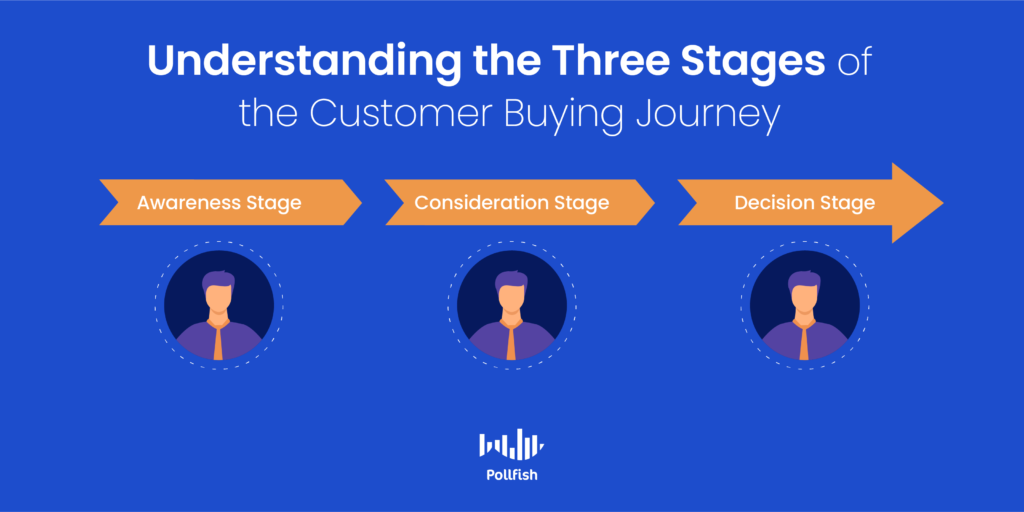
As aforementioned, this journey is composed of three main stages: awareness, consideration and decision stages.
When planning out marketing strategies, businesses need to lay out this process for each of their customer personas. That way, the content and other marketing collateral they produce will be useful for each persona at every stage.
The following explains the three stages of the buying journey:
The Awareness Stage
In this stage, customers become aware that they have a problem. As a means of addressing the problem, customers will search the web for resources. These include consuming content on the cause of the problem.
While reading through this kind of content, which can include blogs, videos, infographics and articles, the customers identify the source or core of their problem. As such, at the end of this stage, customers often leave with a new sense of their true problem, meaning that it may be slightly or entirely different than their original problem.
To adapt to this stage, brands ought to focus on content that addresses customer pain points, which can help customers extract more issues related to their problem (that your business can solve).
Brands should implement industry-focused content and social media to grant an authoritative point of view. Advertising and PR that make mention of the customers’ problem is also necessary for this stage.
The Consideration Stage
In the middle stage, customers define their problem after narrowing it down in the previous stage and consider their options to solve it. In this stage, customers become solution aware, as they evaluate specific products and services and consider different buying criteria.
To adapt to this stage, businesses should show prospects what it is like to use their products and services specifically, focusing on how they provide solutions.
As such, they should use the following marketing collateral and content to nurture prospects in this stage: webinars, case studies, demos, vendor comparisons and trials, along with offers to entice customers to a brand, such as free samples and trials.
The Decision Stage
In the final stage, customers understand the solution they need and just have to decide on which provider, product, or service to use to carry out their solution. It involves customers deciding on their purchase; as such, it often includes speaking with a salesperson, especially in B2B industries.
In this stage, customers are provider-aware; for brands to adapt to this stage, they need to understand the objections that their prospects may have and handle them immediately.
They also need to provide their customers with a unique selling proposition. This will show customers how a business offers value to them and what sets the brand apart from its competitors.
By this stage, the potential customers will have done all the research to be well informed on the services that will fit their needs best, along with the companies they believe are most suitable. As such, businesses must prove their superiority through customer reviews, testimonials and case studies.
Additionally, any content that posits a business as the better choice over a competitor is necessary to persuade potential customers to buy.
How Surveys Optimize the Customer Buying Journey

Optimizing this journey involves understanding your customers at a granular level, especially as it concerns their purchasing behaviors, as every customer persona, let alone an individual customer, is different.
No matter how well a business understands its customers — whether it involves their lifestyle, demographics, opinions, wants, or needs — these aspects are subject to change. With new technologies, innovations to products and changes to services, customers acclimate and change alongside them.
Businesses must follow suit by keeping up with not only the changes within their industry but also their customers’ reactions and subsequent behavior in light of those changes. Surveys are the most equipped tools for garnering granular and up-to-date customer insights.
That’s because, with surveys, businesses can obtain customer feedback within all the stages of the customer buying journey. Moreover, surveys equip businesses with a deep understanding of their customer segments, allowing them to perform market segmentation and identify customer personas.
With these insights in tow, businesses can map out the customer buying journey for each of their customer segments and personas, creating a more personalized experience, which is key to a good CX.
Businesses can also survey their customers on their experience and expectations in each stage of their customer buying journey. This will ensure that they are properly marketing to them, answering key questions and setting themselves apart in a competitive setting.
Surveys also provide insight into customers’ specific problems, showing businesses how they can innovate and perfect their existing products, services and experiences. As such, surveys are the lynchpin to understanding a target market, allowing businesses to optimize each stage of their buying journey.
Being Attuned to Customers in an Omnichannel Setting
Customers seek highly personalized experiences as they wade through their customer buying journey. They reach a particular brand through various channels in their buying journey, which is known to brands as using the omnichannel approach.
To deliver a viable omnichannel approach, businesses must map out their customer buying journeys for various customer segments and personas. To do so aptly, they need to use surveys, as explained above. However, they must decide on a robust online survey platform to obtain valuable results.
To do so, they ought to use an online survey platform that offers a user-friendly interface for creating and deploying surveys to a massive network across websites, mobile sites and apps.
A strong survey tool offers advanced skip logic to route respondents to relevant follow-up questions, implements quality data checks via artificial intelligence and machine learning, offers a wide range of filtering data options, engages respondents in their natural digital environments via random device engagement (RDE) sampling and much more.
With such an online survey platform, businesses can easily glean insights into their customer preferences and buying habits, allowing them to accurately map out their customer buying journey and optimize it to increase their revenue.
Acclimating to Market Research in a Post-Pandemic World
Acclimating to Market Research in a Post-Pandemic World
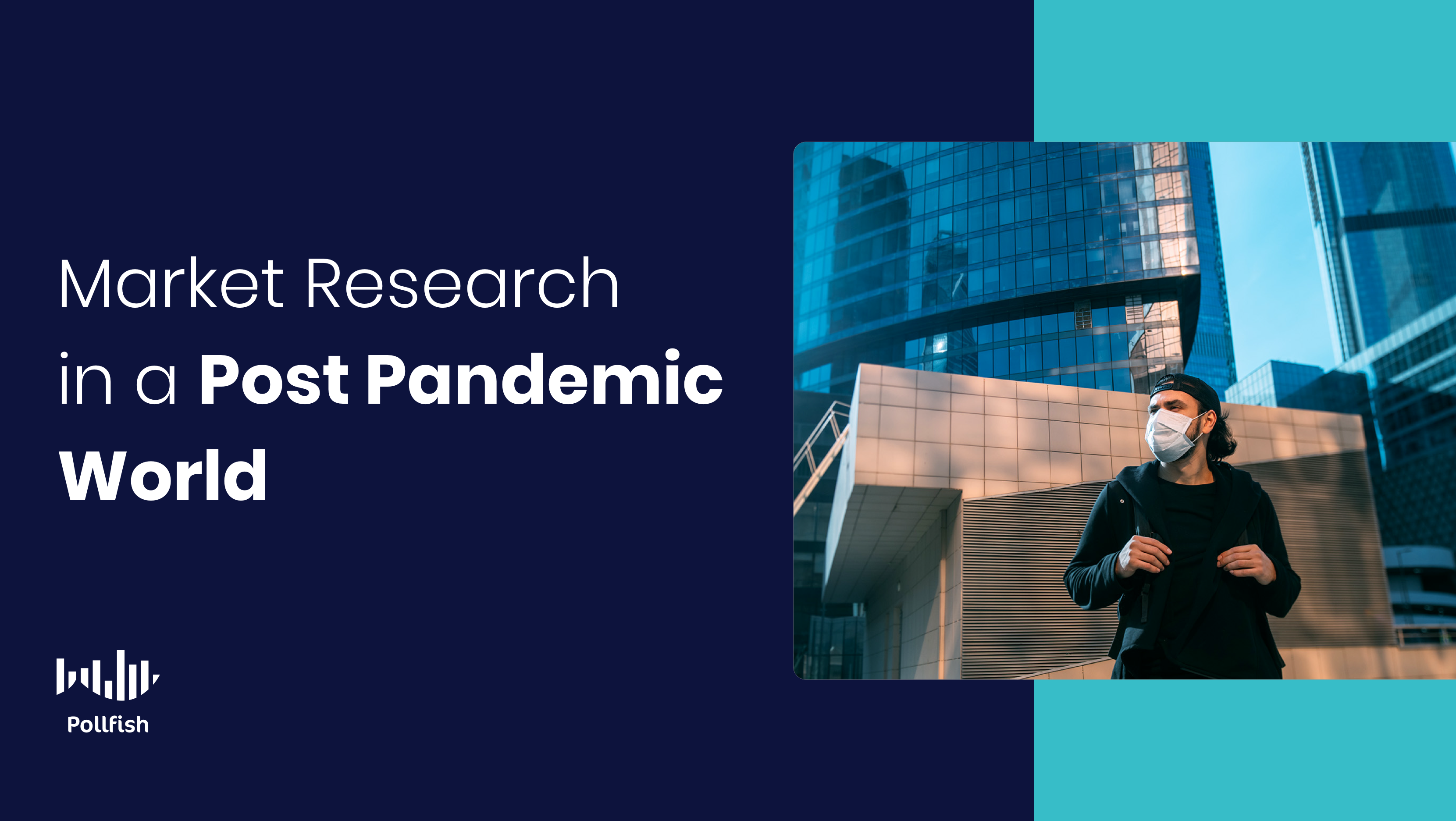
The COVID-19 pandemic has upturned the world in many ways, including the world of market research. However, the post-pandemic world has been gradually emerging, with mass vaccine rollouts, reopenings, office returns for certain workers and the lift of various pandemic-related restrictions.
There are still many market changes that market research constantly seeks to better understand, such as customer expectations, customer behavior, expenditures, loyalty and all other consumer-related factors.
One such change involves customer shopping behavior; three-quarters of Americans changed their shopping behaviors since the pandemic began, with 40% of customers switching brands. The percentage of brand-switching is double that of 2019, showing that customer loyalty is not permanent and many customers will patronize new businesses, should those businesses meet their demands more effectively.
These customer buying behavior changes along with the market at large, have incited even further alterations in market research, several of which entail adapting or getting left behind. This article discusses the new changes and challenges of market research in a post-pandemic world, along with how to conduct market research in this post-COVID world.
Acclimating to a Post-Pandemic World
As we steadily wade into a post-pandemic world, there are many changes and challenges that market researchers and business owners alike must address and adapt to. Many of these deal with changing customer behaviors, along with their behaviors in relation to the market research campaigns they partake in.
The post-pandemic world has been making motions in technologies, approaches and methodologies, many of which were applied during the pandemic, carried over to a post-COVID world. In this way, it is clear to see that the market research industry was not spared changes that need accommodating as the pandemic eases off.
For example, there is a heightened need to use ethically sourced and smart market research, as consumers become more aware of the impact and security that goes with sharing their information. As such, there is more concern over data privacy and certain jurisdictions have enacted changes accordingly.
For instance, the European Union’s General Data Protection Regulation (GDPR) has been updated, the California Consumer Privacy Act (CCPA) has been established, along with newly emerging antitrust laws.
On the business end, there have been cuts to both marketing and market research budgets, with some market research cuts being as high as 71%, despite the scope of market research needs not being in decline. Although it may appear to be reasonable outwardly, businesses should avoid market research cuts, as slow sales periods (such as those induced by the pandemic) point to the importance of studying a target market and understanding the causes behind customer attrition and customers who switch brands.
Businesses and market researchers should keep track of these shifts, as many of them signify the need of making changes to their business in order to adapt to the malleable market research space.
In order to stay updated on market research changes in a post-pandemic world, researchers should conduct secondary research, such as staying on top of industry news within their niche, along with reading authoritative market research websites, such as the Pollfish market research content library.
The Post-Pandemic Changes in Market Research
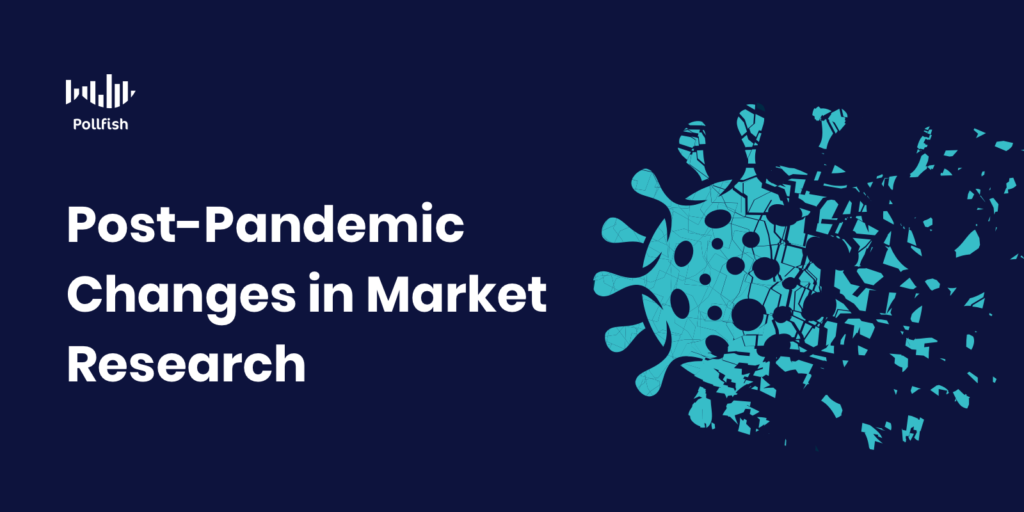
There are various instances of observable and measurable changes to the market research sphere in the wake of the pandemic. These include changes in consumer behavior, challenges to data and research collection, increased digitization, automation and the market research shift to mobile.
In this section, we explore each of these changes, their ensuing challenges, methods of adaptation and more.
Consumer Behavior
- Brand switching and loyalty changes
- 45% of consumers say that COVID-19 changed their brand preferences, and 62% of them expect permanent shifts.
- Consumers have discovered the convenience of getting all of their needs met at home, whether through digital services or contactless delivery.
- There is a greater desire for convenience, as consumers continue to make many purchases online.
- Constant consumer change is part of the new normal, as only 16% of US online adults say they will revert to a pre-pandemic sense of normalcy after the pandemic ends, 75% say that the pandemic will create long-term changes in their behaviors and preferences.
Data Collection
- Several developments that have been unfolding since 2020 will force the digital ecosystem to brace itself for changes, especially those that deal with privacy.
- For example, to improve consumer privacy and mitigate excessive data collection, Apple now uses an opt-in consent to its Identifier for Advertisers (IDFA), so that iOS owners can choose whether to allow their IDFA to be collected and shared across apps.
- Google is going to remove third-party cookies from its browser by 2022.
- These changes will usher in a digital upheaval that will be felt across industries, especially in online market research.
- In response to these changes, market researchers will need to find ways to get first-party data, since they won’t have access to tracking cookies.
- This involves making personal and direct connections with online consumers.
- Market researchers need to be more careful and select the correct digital solutions to the adjusting digital ecosystem.
Increased Digitization
- The digital economy grew since the beginning of the COVID pandemic, as digital sales increased across all industries.
- The rise in digitization will continue during the recovery phase of COVID-19.
- There has been an ongoing digital transformation across all industries, with many finding novel ways to cater to consumers online.
- Internet traffic in some countries rose by up to 60%, as consumers took to the internet in lieu of making in-store purchases, and using in-person services.
- In order to survive, companies must adapt, reorganize and implement new digital technologies.
Automation
- Routine and repetitive tasks, including taking surveys and analyzing data can be automated by machines, a boon and a bane for the market research industry.
- Artificial intelligence and machine learning can easily parse and process large amounts of data.
- Chatbots are being employed in online market research studies as a means of getting respondents.
- Market research and online survey software will soon be widespread and available to clients, removing the need for agency-based syndicated research.
- Consumers and market research workers alike will have quicker expectations of turnaround.
The Shift to Mobile
- As mobile traffic continues to rise around the world, market researchers must take advantage of this landscape, as it provides another medium to extract consumer data.
- This involves creating and deploying surveys online and conducting studies purely through mobile.
- Mobile market research costs are lower than that of a research panel.
- With the shift towards ethnographic research, researchers can observe their participants in their natural environment, as people use their mobile devices voluntarily.
- The medium of mobile helped improve this methodology with observational research apps allowing researchers to examine behaviors in natural settings.
- RDE (random device engagement sampling) is necessary to tap into ethnographic mobile research, as it reaches respondents through randomization, in a wide swath of mobile apps and websites. In this way, it gains data from consumers in their natural mobile environments.
Conducting Post-Pandemic Market Research

With all the ongoing changes the pandemic and its post-pandemic era have brought about, it may appear murky if not extremely difficult to conduct a market research campaign.
However, market researchers who pay heed to the changes, build a solid agile research strategy and use the market research correct tools will be able to both survive and thrive in the post-pandemic world of market research.
There are several best practices to conduct a solid market research campaign post-pandemic. Researchers ought to perform the following steps to maintain a useful market research study during the post-pandemic age.
- Conduct secondary research by visiting industry-specific websites and blogs.
- Read market research blogs and resource pages, such as the aforementioned Pollfish resource center.
- Consider the changes you’ve observed from conducting secondary research and ideate on how you can acclimate to those changes, whether they involve new customer desires, preferences or needs, methods pertaining to research.
- Conduct primary research. The most efficient way to go about this is with a DIY online survey platform.
- Use an online survey platform that offers a mobile-first design. Test it before choosing the correct platform, as many such platforms claim to be mobile-first, but offer surveys that lack in the mobile experience.
- Conduct various market research studies, from brand tracking, to product satisfaction, to VoC (voice of the customer surveys).
- After analyzing your survey individually, consider all of your studies collectively.
- What are the recurring patterns and actions that you notice across studies?
- Create a strategy to address the concerns you discovered in the primary research stage.
- Test the strategy through the 6 main types of research, along with survey research and A/B testing.
- Iterate, test, discuss findings with your team members and take the necessary actions to improve your research, along with serving your customers.
Acclimating to a post-pandemic World
While 2020 has been a time to pause and reflect on changes, 2021 and the rest of the post-pandemic period require studying and implementing new market research strategies.
After all, with changes to customer behavior and preferences, there have also been changes and innovations to technologies, strategies and methodologies. As such, market researchers must stay on top of emerging trends, market research techniques and most importantly, their target market, to properly execute their next major action.
Thus, businesses and researchers need a strong market research tool to accommodate all the post-pandemic changes. A strong online survey platform offers a mobile-first design, random device engagement (RDE) sampling, AI and machine learning to conduct quality checks on the data and effortless deployment across mobile and other digital properties to lure in a diverse set of respondents.
When researchers use such an online survey platform, they are well-equipped to study their fickle consumers in a constantly changing post-pandemic world.
Taking Market Insights Further with Mobile Market Research
Taking Market Insights Further with Mobile Market Research

Mobile market research has ushered in a new era of market research that connects businesses with their target market more efficiently. As such, businesses should take advantage of this novel form of research to fulfill all of their customer intelligence and market intelligence needs.
Global mobile ownership and use has been steadily growing and is now at an all-time high, as 5.27 billion people have a mobile device, which is equivalent to 67.03% of the world's population.
In America, smartphone usage is frequent and ongoing, as Americans check their phones 262 times a day, which totals to once every 5.5 minutes. Given the abundance of and reliance on mobile devices, it would be wasteful for market researchers not to conduct mobile-facilitated research.
This article covers mobile market research, its benefits, its makeup, how to conduct it and more.
Understanding Mobile Market Research
Mobile technology has greatly evolved in the past ten years, so much so that businesses can go beyond communicating with and serving customers through their mobile phones. Mobile market research was born on this idea, accommodating the new era of high mobile traffic.
Mobile market research refers to the method of collecting data through the use of mobile devices, particularly smartphones, but can include tablets and other mobile tools. It extends mobile use and engagement to the sphere of research, as it requires engaging mobile users so that they take part in a market research study.
All the data derived is used for market intelligence, as it is a means of research and is therefore conducted with objectives similar to those in traditional market research.
Given that customers make transactions and engage with businesses on their mobile devices, mobile doesn't merely provide another avenue of commerce, but another means of customer intelligence.
This kind of intelligence is not limited to customer buying behavior, as businesses can use mobile devices alongside various market research techniques. As such, mobile market research is not a standalone affair; as it is often used with other forms of research, such as secondary research, along with primary research such as online surveys, focus groups and one-on-one interviews.
The Importance of Mobile Market Research

Brands should recognize that they can now obtain insights in new ways, ones that were simply not available ten years ago, such as those that use the medium of mobile.
Mobile market research is a kind of intelligence that provides deeper, richer customer insights. As such, businesses must adapt or get left behind, casting aside a swath of customers who have flocked to the mobile medium.
Given that mobile devices continue to power daily activities and open new possibilities for collecting market research data, mobile market research is becoming increasingly important. This kind of research can be used for extracting both qualitative and quantitative market research.
Aside from these areas of importance, mobile market research provides various other benefits for businesses. They include the following:
Mobile marketing research brings businesses closer to their customers than ever before. The kind of data it extracts augments the research experience with more extensive findings than other forms of qualitative research.
It has the capability of connecting with a broader respondent base, including respondents that are difficult to reach. This eases the issue of finding the correct customer segments, be they demographics or psychographics, and allowing only the qualified ones to take part in the study.
Mobile market research is also convenient for both the researcher side and that of the customers. That’s because with mobile, surveys can be answered from anywhere that has a Wifi connection.
Additionally, given the sizing restrictions of a mobile device, mobile research tools must be optimized for mobile, or mobile-first. This approach keeps mobile surveys short and succinct, typical best practices for all surveys, as simplicity helps increase the survey completion rate.
Mobile research offers simplicity and ease of use, which pares away survey fatigue, a prevalent concern in the sphere of market research. There is little to no effort required of customers to take part in a mobile survey.
The device is already in their hands and typically with just one tap, they can enter the survey. In this way, it is far more simple and engaging to participate in mobile market research than in traditional research, especially for those who are time-poor.
This kind of research creates agile market research, as mobile surveys employ quick transmissions and can extract all the customer data, along with the preset quotas within days —sometimes hours— depending on the mobile research platform. Additionally, such a process allows businesses to iterate their marketing and market research campaigns, to truly execute an agile research strategy.
The Makeup of Mobile Market Research
A successful qualitative mobile market research study depends on the quality of the research tools and the techniques for carrying out the study. Both of these aspects must be intuitive and mobile-friendly.
Another key aspect of mobile market research is the element of mobile ethnography. This refers to the qualitative research of a particular society as well as its customs of individual people and its cultural trends. Ethnography provides a full account of everyday life, behavior and practices of a specific group of people rather than statistical data (which mobile market research also involves).
Ethnography traditionally involves conducting fieldwork so that the researcher can experience a culture firsthand as part of their studies for a certain period of time. This way, the researcher is able to garner critical information about a particular social group or community in regards to their culture and customs.
In market research, ethnography grants useful market insights, especially those that pertain to a business’s target market, allowing businesses to understand how customers use their products and services, along with those in their niche.
Mobile market research offers a faster and more effective way to secure ethnographic data, which would otherwise take years to extract should it be conducted through traditional methods. Mobile ethnography offers several advantages, such as feedback in real-time, without the need for being in the same location as the customers under study. Researchers can thus get a glimpse of their global consumers without the need to travel.
Mobile market research is highly reliant on specific tools to carry out the research, such as mobile surveys. These surveys should be easy to deploy across a wide span of mobile websites and apps. They should be designed in the mobile-first approach, so that they are easy to use for mobile users and do not appear as merely an afterthought of online surveys.
These surveys should allow for mobile monetization, which businesses can use as survey incentives. In-app incentives often apply to gaming, that is, as non-monetary incentives that reward respondents with points, game money, extra lives, etc. This kind of survey experience enhances the mobile experience for mobile users, as they get rewarded within their game of choice.
Another important part of the makeup of mobile market research is a mobile online survey platform that filters out and disqualifies respondents that provide low-quality data. This involves using machine-learning to disqualify respondents on a VPN or a bot, those who provide gibberish answers, those who fail tests showing they’re paying attention and other kinds of poor survey respondents.
How to Conduct Mobile Market Research With Surveys

Market researchers seeking the mobile research approach should deploy online surveys, those that offer a mobile-first experience.
Not all online survey platforms offer mobile surveys and within those that do, the mobile surveys aren’t designed through a mobile-first approach. As such, these surveys appear lacking or not as easy to use as their desktop counterparts.
To conduct a mobile market research campaign, begin by narrowing down the high-level needs and themes of the research campaign. Decide on whether your business needs a longitudinal survey, which is a more ambitious project, or a short-term study. Decide on where your study is in the research process, which involves six main types of research.
Use an online survey platform that excels in mobile-first surveys. Your best bet is to opt for a platform that allows you to make your own survey in a few easy steps. This platform should do all the heavy lifting, so that all researchers have to contend with is setting up the screener and questionnaire.
In such a platform, the surveys would be automatically deployed across a broad network of websites, mobile sites and mobile apps, especially highly-trafficked ones. This ensures that the surveys will reach a wide mobile audience.
You should then customize the surveys to your liking, such as adding the A/B testing function if need be, or incorporating multiple audiences into one survey.
Once you receive your mobile-facilitated data, you should analyze it through the online survey platform’s dashboard. You should also export the data as a spreadsheet or whichever file type is convenient for your team, should you prefer to view the data outside of the survey platform.
Making Mobile Strides
Establishing mobile market research campaigns is more important than ever, given the globally widespread use of the mobile medium. This form of market research opens doors to a wide swath of domestic and international consumers brands would be remiss not to study.
The key is to use a strong online survey platform to create and deploy surveys, as well as analyze mobile surveys results. Such a platform should provide relentless quality, making it practical for researchers to set up a customized survey, choose the respondents of their survey, set quotas, get estimated survey completion times, deploy to a network of millions of mobile users, disqualify poor-quality responses and more.
Once a business operates a potent online survey platform, it is setting itself up for successful mobile market research campaigns, the kind that deliver speedy and relevant insights on consumers and the market in general.
Reducing Customer Attrition With Survey Research
Reducing Customer Attrition With Survey Research

All businesses deal with some degree of customer attrition, even long-established ones that hold high consumer loyalty. This includes prominent brands like Apple, Nike and the Home Depot.
Given that even these major brands contend with lost customers, startups and younger businesses ought to pay attention to their own customer attrition and work towards lowering at whenever possible.
Attrition is a serious consequence for businesses, as American companies lose 23% to 30% of their customers each year from a lack of customer loyalty alone.
50% of customers naturally churn every 5 years. While this statistic may not seem as severe as the prior, only 1 out of 26 unhappy customers complain to a business; the rest simply churn. This is a grave detriment to businesses, as it averts them from finding the root cause of their attrition.
This article examines customer attrition, its two main types, why customers churn, how to avoid it and how survey research helps reduce attrition.
Understanding Customer Attrition
Also called customer churn, customer turnover, customer cancellation and customer defection, this phenomenon deals with the loss of customers from a business, especially the kind in which customers never return to a business they had frequently or occasionally patronized.
Businesses can acquaint themselves with their customer attrition, by calculating their customer churn rate, a financial metric that measures the percentage of customers churning within a certain time frame.
Most customers do not remain active customers permanently; there are several reasons behind this. Some of these reasons are preventable, as they occur due to issues that a business itself causes, whether it is a poor product, experience or lagging behind competitors.
Other reasons for customer turnover spring purely from the customers, such as a life event that greatly reduces their purchasing power, such as the loss of employment, or a lack of interest in patronizing certain niches.
As such, whether a customer makes a one-time purchase or is a loyal customer of many years, every customer will eventually cease their relationship with a business.
The Two Main Types of Customer Attrition
There are two main types of customer defection that businesses should consider to be able to distinguish among the kinds that occur to their customers. These two are known as active and passive attrition.
Active Attrition
This is typically associated with subscription-based business models, the kinds that are commonly used in the Internet, publishing and telecom industries. As such, it refers to customers who cancel their subscription to a phone line, magazine or newspaper. It also involves the cancellation of digital services, such as app, data, streaming and SaaS service.
Passive Attrition
On the other hand, there’s passive attrition, which simply occurs when a customer stops transacting with a business, even if it is to make one-off purchases. This kind of attrition is predominantly associated with physical retail stores, e-commerce websites, on-request service providers and others.
Typical Reasons Behind Customer Attrition

Customers can churn for whatever reason they like, especially one-time shoppers, who may not have paid attention to the brand or store they bought from when they made an emergency or rushed purchase.
Then there are the more conscious and personal causes as to why customers end their business relationship. The following lists the typical reasons behind churning customers, including consciously and unconsciously-made decisions :
- Poor service
- This involves customer service and support, along business services on offer
- Lack of a personalized service and experience
- Marketing personalization is a must, as greeting signed-in customers by their names is insufficient. Personalization allows customers to feel as though they are not being marketed to.
- Cost / value breakdown
- Customers may find certain price points disagreeable and switch to competitors.
- Customers may not feel prices are commensurate with the value of company offerings.
- Lost customers (contact information outdated)
- Some customers change their contact information without updating it across company databases.
- Competitor superiority
- Competitors can outshine a business when they offer innovation, better products and services, personalization, lower prices or a number of other offerings.
- No longer in the market (doesn’t need)
- Customers don’t require buying the same things regularly when the need for it runs out.
- Customers cannot reach goals
- This occurs with digital experiences, for example, a website with a poorly working search function or the products themselves,
Avoiding Customer Attrition
There are various strategies that businesses can use to ward off customer attrition, including mapping out plans via a strategic planning process.
Firstly, businesses should hone in on their customer acquisition, making it more targeted so that new customers are better-suited for retention. One of the major mistakes businesses make in acquiring new customers is netting those who are not the best fit for the company.
Some efforts to gain new customers yield the wrong kinds, such as those with loss-leader offers or those from a particular channel. To avoid bringing in the wrong customers, businesses should hyper-target their customers via market segmentation and forming customer personas. At times, it is going to be reasonable to spend more to target customers who will bring a long business relationship, including those with a higher customer lifetime value (CLV).
Next, businesses ought to improve their business offerings, whether it is a product, several products, a service or an experience. All of these tie into a business’s performance and factor into customer retention and loyalty. Brands must improve their customer loyalty, as it is the primary driver of retention — the polar opposite of customer attrition.
In order to improve in all of these areas, businesses need to assess their current products, services and experiences. They should consider the following: does their business hit or miss the mark when it comes to their products and services? Does their business provide useful and positive customer experiences? After considering these questions and others, they should work towards innovation and improvement, which they can later promote.
Brands must augment their marketing strategy, making their marketing efforts more personalized and up-to-date. If not, their competitors surely will. Many businesses already use a next generation approach to appeal to their target market. For example, Glasses USA offers a virtual try-on of their products and Patagonia takes part in sustainability and green marketing, a tactic that resonates with its customers.
Finally, businesses can cut the effect of customer attrition by predicting it. They can achieve this by implementing predictive behavior modeling, a practice that helps companies predict the future behavior of their customers. This allows marketers to improve on the effectiveness of their marketing efforts.
How to Reduce Customer Attrition with Survey Research

Survey research goes a long way towards reducing customer attrition. This is because in order to avoid churn, businesses must satisfy and delight their customers. In order to do this, they must know their customers’ needs, desires, aversions, opinions, sentiments and more.
The more intimately a business is acquainted with its target market, the better it can cater to it. After all, how can a business, or anyone, know how to serve and market to customers without knowing their preferences, sensitivities and wants?
Survey research uncloaks the unknown when it comes to customers, as surveys allow market researchers to study virtually any topic concerning their business and customers. In this way, innovating new product features, and marketing certain messages will no longer be a mystery for brands.
When it comes to customer attrition specifically, brands can set up their surveys to study what drives customers away, along with what they look for in a variety of matters. For example, businesses can study customer aversions by surveying them on specific product features, prices, sales, cultural trends and current events.
As for the latter, brands can observe which marketing ads, images, offers and promotions customers crave the most through surveys. Businesses can set up scaled questions and matrix questions so that customers can rate their necessities and desired items. With this information in tow, businesses can make informed and data-backed decisions, the kind that have a far greater impact on reducing customer attrition.
Retaining Customers for the Long Term
Given the oftentimes staggering customer attrition rates, businesses should work towards strategies to reduce their own customer churn. While there are many tactics that businesses can employ to cut their customer turnover, using an online survey platform is the most proactive way to do so.
By studying all the wants, needs, opinions and aversions of their customers, businesses can avoid ensuing marketing faux pas, product blunders and other snafus that drive their customers away. The key is to use the proper online survey platform.
A strong online survey platform provides artificial intelligence and machine learning that disqualifies questionable users (such as VPNs, respondents that don’t pay attention) offers a wide range of filtering data options, engages users in their natural digital environments via random device engagement (RDE) sampling and much more.
A business that uses an online survey platform with these capabilities and more is well-equipped to stave off customer attrition and retain more customers.
Using Market Research with Emotional Marketing to Resonate with Customers
Using Market Research with Emotional Marketing to Resonate with Customers

Emotional marketing is a useful tactic to employ for a number of reasons. No matter how rational a consumer may be, emotions always have sway, as people are emotional beings that base many of their decisions on how they feel at a particular time.
Emotional marketing connects audiences with brands in a personal and human way and has the power to associate brands, their products and campaigns with distinct feelings.
As new media channels, devices, and platforms emerge, they provide additional avenues for brands to partake in emotional marketing, which is proven to be effective for various purposes. Firstly, 70% of emotionally engaged consumers spend up to two times or more on brands, as opposed to the less than half (49%) of consumers with low emotional engagement.
Additionally, marketing messaging that is purely emotional performs twice as well as rational content (31% vs. 16%). It is evident that this kind of marketing engages customers and produces key results.
This article explains emotional marketing, its importance, how market research works alongside it and how to use surveys when building an emotionally bent campaign.
Understanding Emotional Marketing
Emotional marketing refers to marketing messages and campaigns that primarily use emotion to make a business’s target market aware of the business and influence the target market to buy, remember and share the business and its offerings.
This kind of marketing tactic is typically used to evoke a single emotion that elicits a response, particularly one that prompts decision-making, to help businesses achieve their desired result from their customers. It can also use multiple emotions, especially if brands are working on a set of marketing messages and advertisements.
Emotional marketing addresses the audience’s feelings, values and pain points so that brands can better connect with their target market and even form customer loyalty.
This is because brand loyalty springs from behavioral, rational and emotional loyalty; emotional marketing works by tapping into the latter. Emotional loyalty entails customers who are emotionally engaged, feel delighted by a brand, would recommend the brand and even advocate for it.
As such, emotionally engaged consumers hold a great deal of value for businesses, as they are inclined to not simply buy more, as aforementioned in the intro, but to help brands keep their customers, therefore increasing their customer retention rate.
The Importance of Emotional Marketing

Emotional marketing carries significant weight, as emotions play a major role in decision-making, given that 95% of cognition resides in the emotional side of the brain.
82% of customers with high emotional engagement always buy from the brand they are loyal to during their purchasing decisions. As such, it is no wonder that consumers who are emotionally engaged spend twice more on brands (see statistic in the intro).
At times, the emotional response to an ad or marketing message influences consumers to buy more so than the content of the ad itself.
When businesses use emotional marketing strategies correctly, they differentiate themselves from other brands. It is generally key to stand out from the crowd, but more so when marketing to an audience, as people are inundated with thousands of marketing messages every day.
Brands should thus consider the following: out of the thousands of ads consumers are flooded with daily — whether on billboards, emails, websites, social media, etc. — how many of these messages actually resonate with them?
Given that most of the advertisements and other marketing messages that consumers see on a daily basis will not live to be more than an afterthought, brands should seek to stand out as much as possible in their marketing efforts.
Emotional marketing allows brands to achieve this goal, as messages that trigger emotions are not disposed to be ignored nor easily forgotten. Rather, they stir consumers into action and can resonate with them for years to come, depending on the degree of emotion they set off.
Aside from triggering emotions that incite action and deliver unforgettable memories, emotional marketing also allows brands to engage in storytelling, thereby forging connections with their target market. However, to have the correct impact on an audience, brands will need to assure that their campaign is honest and authentic.
Additionally, when businesses relay their identity and vision properly, it makes emotional marketing simple, as the emotional tone of an advertisement will make more sense.
Finally, aside from connecting consumers with a brand, resonating with them and inciting them to buy more from a particular brand, emotional marketing helps create customer advocacy. In this form of heightened customer loyalty, customers advocate on behalf of a brand for free, such as on social media, in forums, review sites or by giving word-of-mouth recommendations. Brands must first establish such a connection and state of loyalty and emotional marketing helps them achieve this.
The 5 Key Emotional Hooks To Use in Emotional Marketing
Marketers and market researchers can implement different emotions in their marketing campaigns.
The strongest human emotions have the best chance of success, especially when it comes to resonating with consumers. This is important because, although consumers may not buy something immediately that they discovered from an emotionally charged message, the message will still last within their minds.
This kind of remembrance is powerful, as it can enable the marketing message to live on in the consumers’ minds, eventually making them purchase, or at the very least, engage with a company.
The following explains the five emotions to use in this kind of marketing and when to use them:
- Happiness
- Everyone desires happiness and you can tap into this emotion by showing how your brand produces happiness.
- This does not have to be directly from an offering, but rather a story including your product or service.
- Anger
- Inciting anger lets customers realize that something must be done or changed to resolve an issue and achieve justice.
- For example, ads that address stereotypes, painting the narrative of a brand fighting those stereotypes whether directly or indirectly.
- Fear
- Evoke fear when it aligns with your target audience’s existing beliefs about fear with a product/service you sell. For example, marketers can use the fear of danger in their ads to promote car insurance, as accidents can occur to anyone.
- Use fear in the form of FOMO (the fear of missing out) to highlight limited-time offers, which will urge customers to buy within a certain period of time.
- Greed
- The emotion of greed comes into play, as customers want to feel that they get more for their buck.
- Marketers can design campaigns centered on major savings to elicit this emotion. They can also employ BOGO deals.
- Belonging
- This feeling is part of the mechanism used to avoid feeling alone. Strong bonds and intimacy are a part of human nature and signifies being part of a group. Brands can incorporate belongingness by forming communities (online or offline) for loyal customers to share common interests and passions.
- This also plays a role in brand equity, as it allows brands to be seen as more than simply their products.
Using Market Research Alongside Emotional Marketing

Market research can and should be used alongside emotional marketing. Market research provides a strong method to support all emotional marketing campaigns. This is because it is not enough to build an emotional marketing campaign, or any marketing campaign, off of intuition alone.
Brands will need to know what kind of imagery and messaging that their target market will be receptive to and what kind to do without. After all, it is in the best interest of all businesses to avoid offending and disturbing their target market. Upsetting consumers in such a way can cause customer attrition, which can become permanent.
Rather than using emotional marketing messages that miss the mark, or even go as far as to offend, brands should conduct market research, allowing them to understand their customers and avoid marketing pitfalls. There are two ways to go about this: secondary and primary research.
Secondary market research involves gathering and studying information that has already been researched and made available. While this is a critical early research step, the information from this research is not always relevant to a business.
Primary market research, the kind that researchers must conduct themselves, is far more relevant and granular to a business. This is because, in this kind of research, the market researchers and their businesses form all of the inquiries specific to their study.
The most apt means of conducting primary market research is through online surveys. These tools grant researchers full control of their study, facilitating who is qualified to participate, the questionnaire, the visualizations of the results and much more, depending on the online survey platform.
How to Create a Survey for Emotional Marketing Campaigns
There are numerous ways to prepare and test an emotionally-driven marketing campaign. This includes gauging customers’ emotions towards a brand in general, if brands wish to see the emotions that their companies inspire. As such, surveys can test all emotional ties between customers and businesses, not merely campaigns centered on evoking an emotional response.
The following provides questions to use with different emotional marketing campaigns, along with questions for measuring all emotional affiliations, regardless of campaign type.
- Question: Considering your overall customer experience with [brand, product, service, experience], which of the following emotions do you feel when thinking about [brand, product, service, experience]?
- Campaign/Purpose: Finding all the emotions that customers associate with a brand or its specific offering
- Question Type: Multiple-choice, multiple-selection
- Answer examples: happy, satisfied, appreciated, angry, disappointed, relieved, disappointed, stressed, worried, anxious, confused, frustrated, relieved, confident
- Question: How does the following advertisement make you feel?
- Campaign/Purpose: Emotional marketing of future (or running) ads
- Question Type: Multiple-choice, multiple-selection
- Answer examples: happy, angry, scared, in want of the [product, service, experience], like I belong
- Question: I have feelings for [Brand/Product] X that I do not have for any other [Brand/Product].
- Campaign/Purpose: General emotional comparison with a competitor
- Question Type: Yes or no and open-ended
- Answer examples: Yes, no, other [explain]
- Question: What does this issue make you feel?
- Campaign/Purpose: Emotional marketing based on a topical or continuing issue
- Question Type: Multiple-choice, multiple-selection, open-ended
- Answer examples: It’s disturbing, it’s unfortunate but expected, it needs to change now, I have no feelings towards it, it confused me, I’m not sure what needs to be done about it, Other (open-ended)
- Questions: Which ad/message do you feel the strongest for? Which ad/message makes you the most [happy, sad, disturbed, satisfied, etc?]?
- Campaign/Purpose: Emotional comparison with a competitor based on a specific marketing material
- Question Type: Multiple-choice
- Answer examples: Ad 1, Ad 2, Ad 3, etc.
Resonating with Customers
Emotional marketing has the power to make marketing messages stay with their intended audience long after they’ve seen them. They spur their viewers into action, or at the very least, charge them with feelings stronger than non-emotionally-bent marketing messages.
This kind of marketing also forms emotional bonds with its target market, a critical component of building brand equity and customer loyalty. However, these kinds of messages must be executed properly in order to not offend, bore or have no emotional effect on their intended targets.
To build a strong emotional marketing campaign, businesses must observe their target market by way of market research, using both secondary and primary market research. An online survey platform is the most effective tool for conducting primary research and can make a lot of headway in emotional marketing campaigns — if brands use the correct online survey platform.
A strong online survey platform allows you to make your own survey in three easy steps, provides artificial intelligence and machine learning to stave off low-quality data, allows a wide range of filtering data options, engages users in their natural digital environments via random device engagement (RDE) sampling and much more.
When market researchers choose a platform that offers all of these capabilities, they are setting up their business for success with emotional marketing campaigns and all other kinds.
Using Surveys to Uphold Cultural Marketing and Appeal to Customers
Using Surveys to Uphold Cultural Marketing and Appeal to Customers

In an increasingly diverse digital and physical landscape, cultural marketing is more important than ever. Diversity in the United States is growing, correlating with the public’s views on the need for diversity in marketing.
61% of Americans find diversity in advertising important, and 38% of consumers are more likely to trust brands that display diversity in their ads. Evidently, brands must carry out cultural marketing to satisfy a diverse target market.
To do so, brands should implement a data-driven strategy so that they are properly marketing to and serving consumers from a wide spectrum of cultures, ethnic backgrounds and socioeconomic statuses.
This article sheds light on cultural marketing, its importance, the consequences of neglecting it and how surveys help brands understand diverse audiences and execute cultural marketing campaigns.
Understanding Cultural Marketing
Also called multicultural or cross-cultural marketing, cultural marketing refers to the marketing practice in which a message, product or service is promoted to a particular group of potential customers who belong to a certain culture, demographic or socioeconomic group.
The campaigns making up this practice are meant to build consumer relationships with existing and potential customers. In cultural marketing, businesses leverage various aspects of an ethnic group’s culture, such as its language, tradition, holidays, religion and other cultural matters.
Cultural marketing is also a kind of inclusive marketing, in that it is meant to represent all people, rather than merely those who make up the majority of the population. It is used for both advertising and marketing to people in different cultures as well as appealing to their specific interests and catering to their specific needs.
The ultimate goal is to relate and connect with diverse consumers so that they eventually convert or remain loyal to the brand; the latter involves customers who have made at least one purchase. After all, retention is critical for business and cultural marketing can help increase a business’s customer retention rate.
This is because all customers want to feel represented and included. Given that retention involves building solid relationships with customers and making them feel included and appreciated, cultural marketing can make strides on increasing the customer retention rate.
The Importance of Cultural Marketing
Multicultural marketing is critical in the face of a diversifying nation and an overall diverse digital environment. However, there are many other factors that make up the importance of cultural marketing.
Brands ought to take them all into consideration, as some of these reasons will also guide them on forming a cultural marketing strategy.
First off, this kind of marketing opens new doors for businesses to engage with consumers who are outside the “majority audience.” By targeting specific target market segments based on their ethnic and socio-cultural facets, businesses can build a deeper emotional connection with consumers. In turn, this increases the chance of a conversion.
This kind of connection also builds customer loyalty, thus playing a role in retaining customers. Retaining customers paves the way for customer advocacy, in which customers act as brand ambassadors, recommending a business to their family, friends and peers.
Thus, establishing an emotional connection by way of engaging customers is important, as 80% of emotionally engaged customers will promote brands they are loyal to compared to 50% of those who are less engaged.
Moreover, a consumer’s ethnic, cultural and socioeconomic background influences how they behave, from how they consume content, to their customer buying behavior. Marketers should therefore consider their target market’s various traditions, languages, customs, beliefs, and other experiences when developing and delivering marketing campaigns.
Multicultural marketing brings these influences into focus and allows businesses to strategize accordingly, which in turn allows brands to improve their communications with the diverse groups making up their target market.
Additionally, cultural marketing deals heavily with adoption, as there are constant shifts in the U.S. cultural landscape and abroad. The onus to adapt to these changes is on businesses.
Finally, there are certain cultural aspects that may be appropriate in some cultures, but not in others. Businesses must assure that they don’t appear culturally ignorant or indifferent to these cultural differences and sensitivities. For example, what’s acceptable to wear in the United States may not be in the Middle East.
What Happens When Brands Neglect Cultural Marketing

To piggyback off of the previous section, brands that neglect understanding cultural differences will poorly execute cultural marketing, if they attempt any culturing marketing endeavors at all.
Brands that don’t implement cultural marketing in their strategy will have several reputational consequences, along with other business risks. Firstly they are going to appear dated and irrelevant, allowing competitors to outshine them in this regard, as competitors will make themselves appear to be more inclusive, culturally aware and up-to-date.
Next, it is going to result in at least one marketing faux pas, such as when imagery or concepts in ads are insensitive to certain cultures, or when certain phrases get lost in translation. Either way, a lack of cultural awareness will eventually make its way into a marketing campaign, poorly reflecting on a company.
This, in turn, will make a business appear to be rude, insensitive or willfully ignorant about a particular demographic, nation or socioeconomic group. It is similar to that of a business simply being out of tune with its target market, therefore sending them irrelevant, poorly targeted, clueless or unwanted messages.
All of these consequences carry dangerous risks, such as landing into a PR crisis, deterring existing customers from making further transactions, turning away current customers for good, declining sales and at worst, shutting down due to lack of business.
Thus, businesses should attempt to understand cultural differences among their target market segments and practice cultural marketing to properly appeal to a wide range of customers. This will show consumers that a business cares about them, their unique cultural needs and sensitivities, and is soliciting their attention in an inclusive manner.
How to Engage in Cultural Marketing
There are several major undertakings in cultural marketing. First off, a business must become versed in several cultural matters, as they relate to their diverse customer segments. This involves conducting secondary market research to understand dominant cultural trends and matters.
It also involves studying and listening to their target market, in order to address and cater to their unique needs. This involves conducting primary market research, as self-conducted research allows brands to examine things particular to their business and customers, allowing them to inquire into specific cultures.
The following lists how to engage in cultural marketing:
- Understand cultural norms to avoid missteps.
- Some nations and their cultures are more conservative
- Observe the six dimensions of culture. These provide the key features of a culture, or the mental programming instilled within countries and peoples. Understanding each culture and country’s stance in each will allow you to market to it appropriately.
- Power Distance
- Individualism
- Indulgence
- Masculinity
- Uncertainty avoidance
- Long-term orientation
- Demonstrate relevance in your messaging with marketing personalization.
- This also involves staying atop the latest concerns and trends. For example, not all ethnicities are concerned with the same issues, as aren’t all socioeconomic groups.
- Leverage customer data to anticipate needs and avoid making mistakes due to cultural differences.
- This includes conducting market research, both primary and secondary, along with using other customer data tools, such as analytics.
- Surprise and delight customers, while taking cultural norms, practices and taboos in mind.
- All customer segments will appreciate surprises that benefit them, such as a sale or promotion, especially if it is tied to their culture.
- Make sure to not offend your target cultural segments.
How to Use Surveys to Execute Cultural Marketing
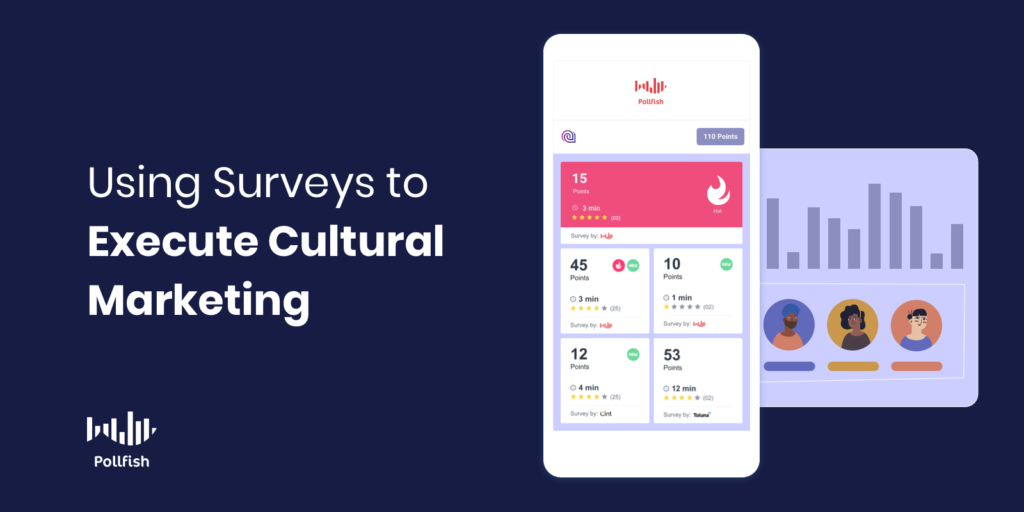
Surveys are the most apt tools to use to properly execute cultural marketing campaigns. This is because they can be used in virtually all of the above practices for executing cultural marketing campaigns.
Businesses can use surveys to identify and categorize their target market into granular segments and personas, allowing businesses to learn about various demographic, psychographic and class-based groups. As such, surveys provide brands with insight into major cultural aspects, such as the six dimensions of culture and marketing personalization.
They are the most potent tool for gathering customer intelligence and data, as businesses can gain insights into any topic of their choice and deploy it to a mass network of digital users (depending on the online survey platform).
Surveys allow brands to stay abreast with the latest cultural happenings, shifts and trends, so long as they are deployed regularly. They are especially useful for cultural marketing, since brands can screen their respondents prior to moving them to the questionnaire to ensure that their respondents belong to the brand’s cultural background of study.
In this way, surveys help businesses stay organized, ironing out any organizational or categorical kinks from the process, as there are many diverse groups that businesses ought to study in order to take part in cultural marketing.
After segmenting customers and data, businesses can use the data they extracted from surveys to guide all of their cultural marketing efforts. This is because surveys are essentially a vessel that connects businesses with their customers, revealing all kinds of customer opinions and needs to businesses, so that they can become culturally aware and avoid poorly executed marketing campaigns.
Remaining Culturally Relevant
The importance of culture in terms of marketing is major. The world market is made up of many smaller markets. As such, the entire world economy is composed of smaller, distinct economies with their own cultures and languages.
In order to tap into these economies, brands must be attuned to their unique culture. Surveys are an excellent option to use to gain insight into different cultures, cultural needs and differences, allowing brands to avoid making mistakes in their cultural marketing.
To execute a successful survey study, businesses ought to invest in a strong online survey platform, the kind that makes it easy and practical to screen respondents on a granular level, set up a questionnaire, deploy it to the masses and filter data in the post-survey results.
Additionally, a useful online survey platform offers artificial intelligence to perform quality checks that remove poor quality data from making its way into the results of the survey. When a business invests in such a survey platform, it is on the right track to study different cultures and demographics and successfully execute cultural marketing
Consumer Engagement: How to Make an Audience out of the Multilingual Generation Z
Consumer Engagement: How to Make an Audience out of the Multilingual Generation Z
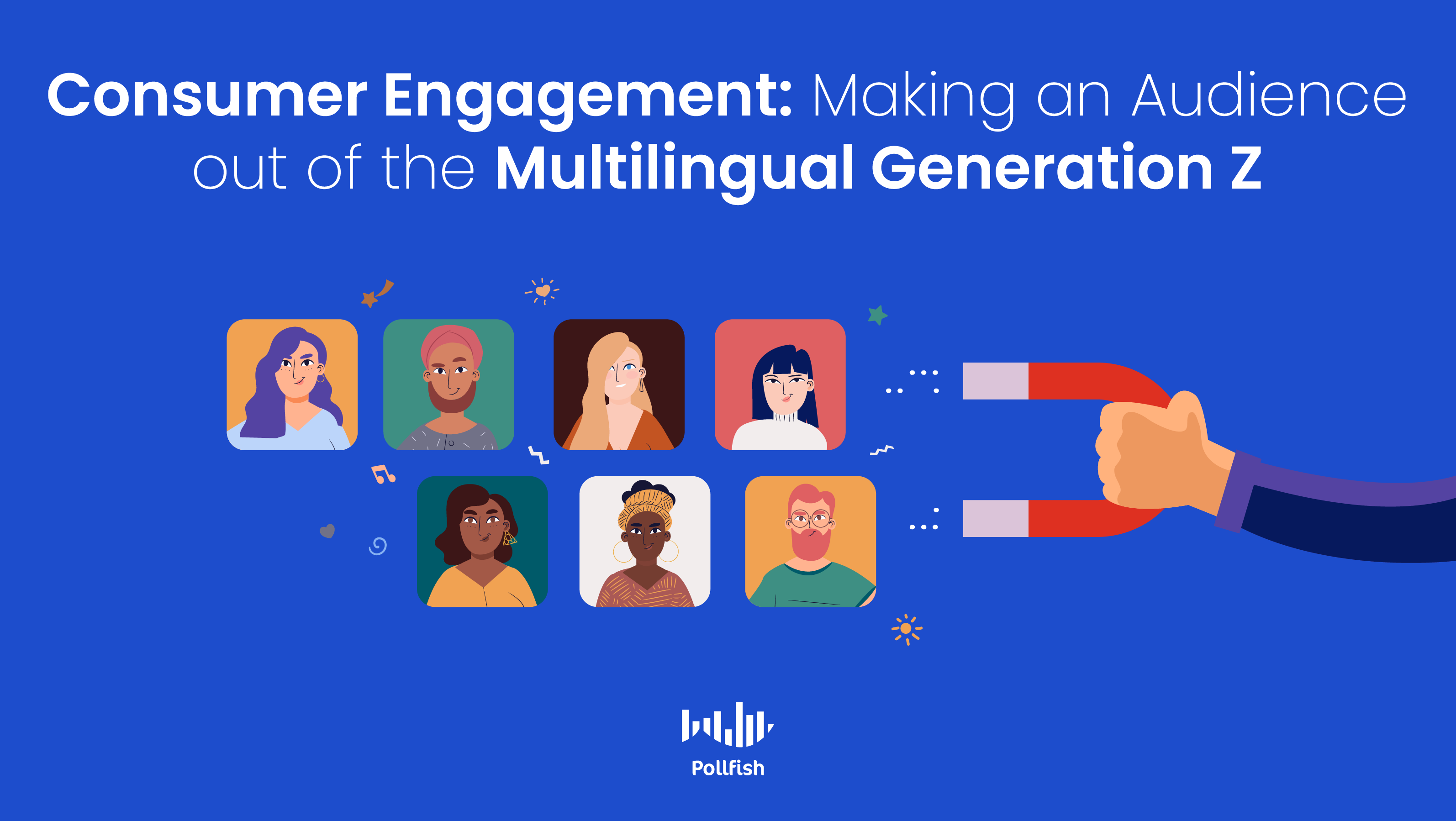
Gen Z should be part of your consumer research for consumer engagement. No one should ever underestimate a Gen Z’s voice and financial power despite their age.
The best and most accurate moniker that post-millennials ever received is that they’re widely recognized as the next consumer powerhouse, the ideal target for consumer engagement. With a projected $33 trillion income by 2030, Gen Zers are poised to become the second wealthiest generation in US history a few years from now (next to Millennials). Not to mention that just last year, Fast Company forecasted them to account for 40% of all consumers worldwide.
As the Z generation is considered to be “on the cusp of adulthood”, members of this age group go around with a lengthy list of nicknames, which can be good or bad, depending on who calls them that way.
Sometimes, they’re praised as being “entrepreneurial” as most of them are business-minded and would typically avoid working from 9-5 in the corporate world. On the other hand, media and market research companies have labeled Gen Zers as “screen addicts”, considering a recent finding that they check their phones more than 100 times a day on average. But you should never underestimate and should always understand the consumer value of Gen Z.
Consumer Engagement For Different Demographics
Born after 1996, most Gen Zers are not yet old enough to vote (the oldest is only 23 this year) but they’re on track to being the most well-educated generation yet. Before we get into the reasons why, let’s take a brief tour first of this generation’s older siblings, parents, and grannies.
First off are “Baby Boomers” who were born between 1946 and 1964. They're currently between 57-75 years old (Gen Z’s grandparents) and are the biggest consumers of traditional media like television, radio, magazines, and newspapers—thus their alternate name “silent generation”.
Despite being traditionalists, 90% of boomers own a Facebook account. Boomers are also the most comfortable with using cash as payment for everyday consumption out of all the other age groups.
Then we have the Gen Xers or the “MTV generation.” They grew up spending most of their time in front of the television and also spent roughly 7 hours a week on Facebook, making them a great mix of both traditional and digital savvy. Compared to boomers, Gen Xers would typically do more research when purchasing goods online but still prefer to do transactions in person as this is how they demonstrate loyalty to their well-loved brands. They’re Gen Z’s parents.
Coming next are the viral and always on the go “millennials” or Gen Y. This generation is actually divided into two groups, namely Y.1 (25-29 years old) and Y.2 (29-39) but one common thing about them is their penchant for on-demand services such as Netflix and Spotify. Millennials are known for their penchant for spending, even in a crisis, such as shown in an article about millennial savings and spending during the pandemic.
Because millennials own multiple social media accounts, they’re extremely comfortable using mobile devices but 32% still use a computer for purchases. Compared to Gen Xers, they have less brand loyalty as millennials are typically impatient and particular when it comes to pointing out poor company service. This is a handy-dandy guide for how Americans spend by generation.
Who Are The Gen Z And In What Way Are They Diverse?
Gen Z is the newest generation, born between 1997 and 2012. This age group is different from previous generations in some important ways, but similar in many ways to the Millennials especially when it comes to their social and political views.
Members of the Gen Z (or simply Gen Zers or post-millennials) are racially and ethnically diverse, making this age group highly multilingual. In the United States, for example, post-Millenials think that the country’s growing racial and ethnic diversity is a good thing which gives them a tendency to be less racist.
According to statistics, almost half of Gen Zers in the United States are either European, Middle Eastern, or North African Americans while 14% are black, 6% are Asian, and 5% are mixed.
Consumer Engagement For Engaging Your Gen Z Digital Consumers
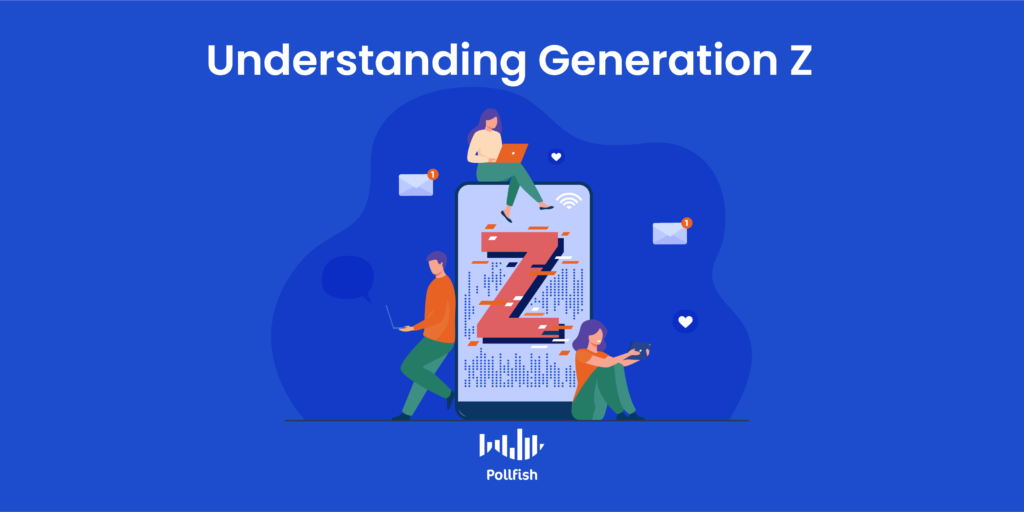
Gen Zers, more than any other younger age groups, are known to be digital natives, meaning they have little or no memory of the world as it existed before technology exploded.
While boomers and their parents (Gen X) would most likely opt to update themselves with the daily news by reading the broadsheet, their descendants (the post-millennials) would just simply open Twitter and do some scrolling to get the same.
This is what makes this generation extra unique–Gen Zers think that they have the power to do almost anything just as long as their mobile phones are wrapped around their hands. No wonder why they’re also sometimes referred to as the “i-Generation”.
The i-Generation is also quite versatile in the sense that they know exactly how to use every single social media platform available in the market. Their approach to posting on these sites is multifaceted as they use different platforms for different activities.
On Facebook, they follow trending stories; on Instagram, they share how fun their life is; on Twitter, they write their thoughts like an online diary; on Youtube, they compare specs by watching product reviews; and on Tiktok, they challenge themselves by recreating what is currently viral.
The Financially-Conscious Generation
Because the average i-Generation fella received their first mobile phone at age 10, many of them grew up playing with their parents' mobile phones or tablets. When not communicating, they’re either playing mobile games or buying stuff online. Life for them is generally comfortable since their Gen X parents have worked hard for their stability. In return, Gen Zers tend to avoid debts since that’s what they’re told. Debit cards top their priority list, followed by mobile banking. Unlike millennials, very few Gen Zers own a credit card.
What’s even more interesting is that the offspring of the MTV generation love learning about personal finance. Most members of the i-Generation have a strong appetite for financial education and are opening savings accounts at younger ages than prior generations.
And because the parents of post-Millennials are more well educated than the parents of millennials (Gen X), Gen Zers are more likely to put up their own startup business in the future instead of working as full-time employees.
What Makes The Z Generation Multilingual?
We discussed in the first few parts of this article how culturally-diverse Gen Zers are. If you’re wondering which between them and the millennials win this category, then they're definitely the former as post-millenials are either children of immigrants or immigrants themselves. They’re multilingual, and many learned English as an additional language to their mother tongue.
When dealing with people whether professionally or just to casually hang out, most members of the i-Generation would prefer face-to-face communication. Sure they will post and tweet, but they want to get involved and eventually make a difference. Compared to older generations, a Gen Z’s sense of purpose is unmatched. They won’t do something if it’s against their will.
This makes them accessible personally and virtually. Since Gen Zers are an outgoing and approachable bunch both in the real world and in social media, it’s time for marketers to learn how to reach them.
How You Can Use Consumer Engagement For Your Multilingual Gen Z Consumers
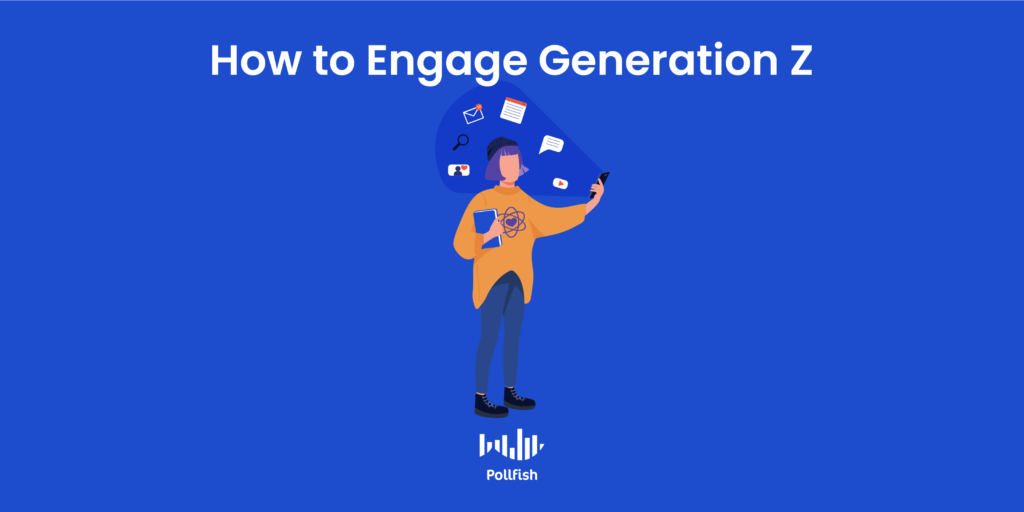
As mentioned a while ago, the multilingual Generation Z is the future consumer powerhouse that’s why now is the perfect time to begin thinking about how to best engage them using a global marketing strategy that appeals to this rather tricky age group.
Having a global marketing strategy that reaches out to new and international audiences is a must especially if it’s intended for a specific demographic (like Gen Z) but as a business, you also need to think about ways on how you can engage consumers regardless of their generation or age group so it would be best to think about the boomers, Xers, and millennials as well when coming up with an effective consumer engagement global marketing strategy.
Businesses that are targeting to turn them into loyal customers should provide Gen Zers with engaging and immediately beneficial experiences. When making text posts on Facebook for example, make them concise and short because most teenagers nowadays have the attention span of a gnat and they’re easily distracted.
While a millennial or Gen Xer might stop for a moment to read a longer post, Gen Zers want to get straight to the point so that they can proceed to the next one. Despite these, they relatively have faster processing speed than millennials—so you should also consider this somehow.
Brands that don’t adapt to the way Gen Z consumes messages might end up losing them as paying customers.
To properly engage Gen Z consumers, one should take into primary consideration their so-called inclusive-first mindset. Although most of the guidelines we have on inclusive communication are geared towards being sensitive to socio-economic issues, we rarely talk about inclusivity in terms of the language itself.
Projecting an inclusive model of communication by accounting for the languages spoken in your targeted audiences’ regions can help you get better reception from Gen Zers.
In this case, collaborating with a company experienced in providing translation services for different age groups and can navigate through complex language barriers, yes even generational barriers, can help you capture this elusive and values-driven demographic.
By translating your content, you can develop a more inclusive approach to engage not only your Gen Z consumers but also their friends and families, which can develop into a ripple effect further fortifying your brand and public image.
But age group is just one of the many demographic options that a brand should consider when studying the right approach on consumer engagement strategies. There are a few more indicators to consider to get the best results such as gender, location, device being used, occupation, and of course, language spoken since the age group in talks is a highly multilingual one.
Engaging The Alpha Consumers
If you think that Gen Z is the youngest generation out there, then think again!
Since we’ve already covered the W, X, Y, and Z generations, it’s now time to come back to A! Introducing—the Alpha generation!
They were born in 2012 and will continue at least through 2025 (four years from now), which makes them the “pandemic babies”. This is yet another interesting age group to cover as they’re the kind of digital natives that will expect fully integrated and personalized, consumer experiences. For them, tangible cash was never a thing. Their idea of money is a number on a screen that they can spend through apps and other forms of e-commerce.
We’d love to tell you more about Gen A but that’s already for another comprehensive article. But if you’re really keen to explore the potential of the Alphas for your business, then you might wanna try doing surveys among mobile users. There’s a new, fast, and amazing way to get the information that you need by just simply creating polls. It works well for Gen Zs so it should work for Alphas too!
The Wrap Up
So are generations the best way to categorize consumer behavior? Not entirely, but it also doesn't hurt to understand these age groups since marketing tools and audience segmentations generally include age as a factor, among many others.
The truth is, everyone grows up, and sometimes, older generations tend to behave more like younger generations. If you want your business to reach the Alphas, you need to start going out often in order to meet and get to know all age groups. Otherwise, surveying millions in just one click for your brand visibility can be of big help. Whatever you choose, the result will likely be favorable just as long as you know where to start and you know who to seek.




